I loved Santiago de Querétaro so much that if I would ever move to Mexico, that would be my home.
Commonly referred to as Querétaro (pronounced Ke-REH-ta-ro), it’s also the capital of the state that bears the same name, in Central Mexico.
The Otomíes and the Chichimecas ruled this land until 1531 when the Spaniards arrived and said: There’s a new boss in town!
The historic centre of this colonial city is a UNESCO World Heritage Site with former convents housing museums, antique stores, hotels, and theatres that retain the grandeur of viceregal times and the pink tones of the cantera stone.
The 18th century, seeing as the golden age of the colony, filled the city with monuments and sculptural fountains. Roam around the andadores (pedestrian streets) and you’ll think you’re walking through an outdoor museum.
The Pueblos Mágicos (Magic Towns) nearby make awesome day trips. They’re perfect to explore the semi-desert landscape of the region and to enjoy outdoor activities in Querétaro.
Plan a trip to the Sierra Gorda Reserve to discover even more of the natural beauty of the state.
From here you can also visit other lovely towns like San Miguel de Allende (a 1.5-hour bus ride) and Guanajuato (a 2.5-hour bus ride).
Disclosure: This post contains some affiliate links. If you make a purchase through those links I will earn a commission at no additional cost to you (zero, nada). To check the full disclaimer, click here.
These are the best things to do and see in Querétaro that will make you want to stay and never leave.
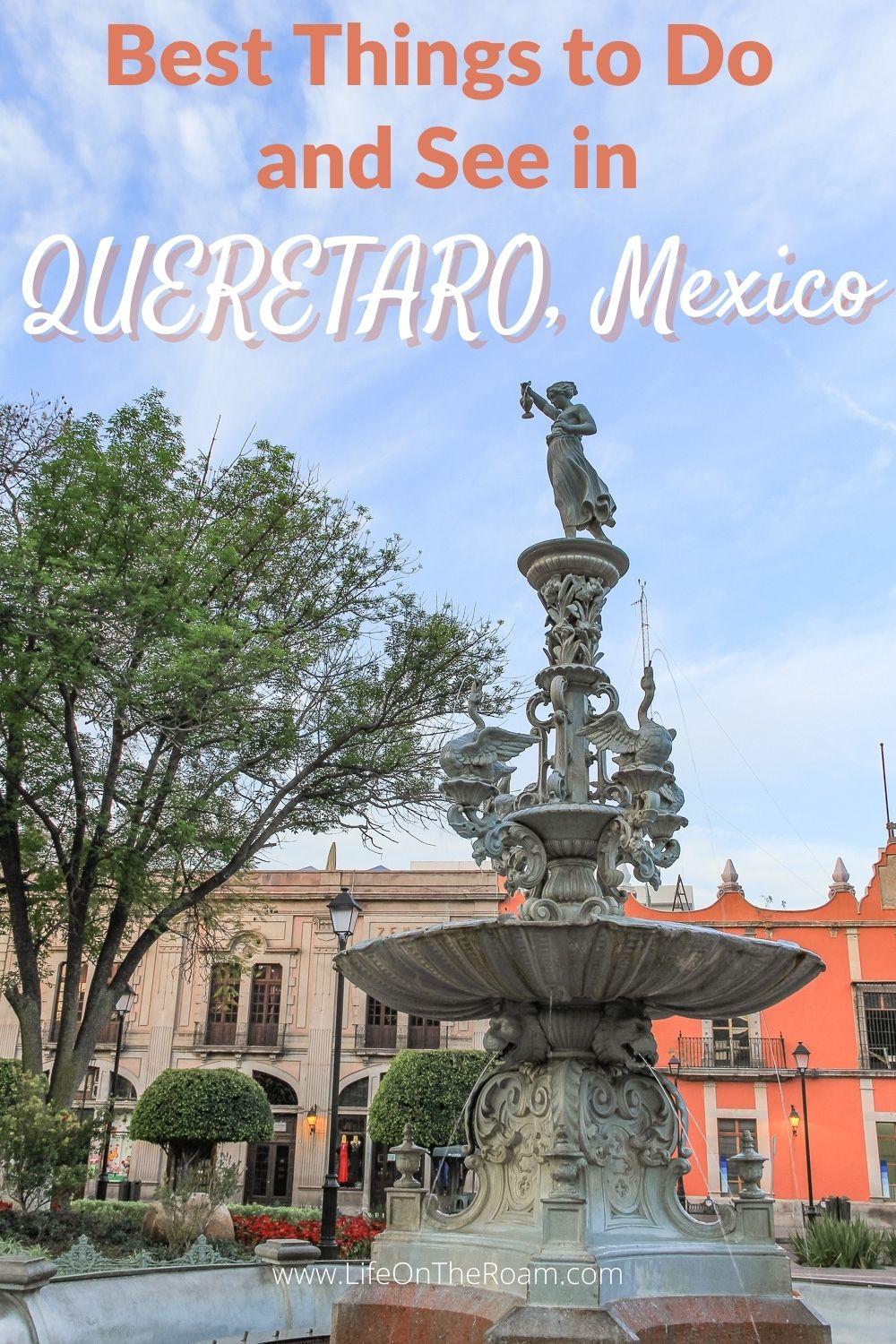
Table of Contents
Visit the Monuments and Buildings of Querétaro’s Historic Centre
The best way to explore downtown Querétaro is on foot. You don’t need a car.
It’s a leisure walk where you’ll enjoy the rainbows of colours, the quirky door knockers, and the cultural events in the jardines (squares).
To have enough time to see some museum exhibits, check the churches’ interiors, and have a drink at some of the many cafes, plan for a three-day trip so you don’t have to rush. Add two or three more days if you want to visit the nearby towns, easily done by bus.
Here’s a suggested itinerary to see the wonders of Santiago de Querétaro and learn about its history. I’ll start at the heart of the Historic Centre in the Andador 5 de Mayo.
The enclosed map above marks the location of the sites I included to help you navigate your walk.
Learn about the War of Independence at La Casa de La Corregidora
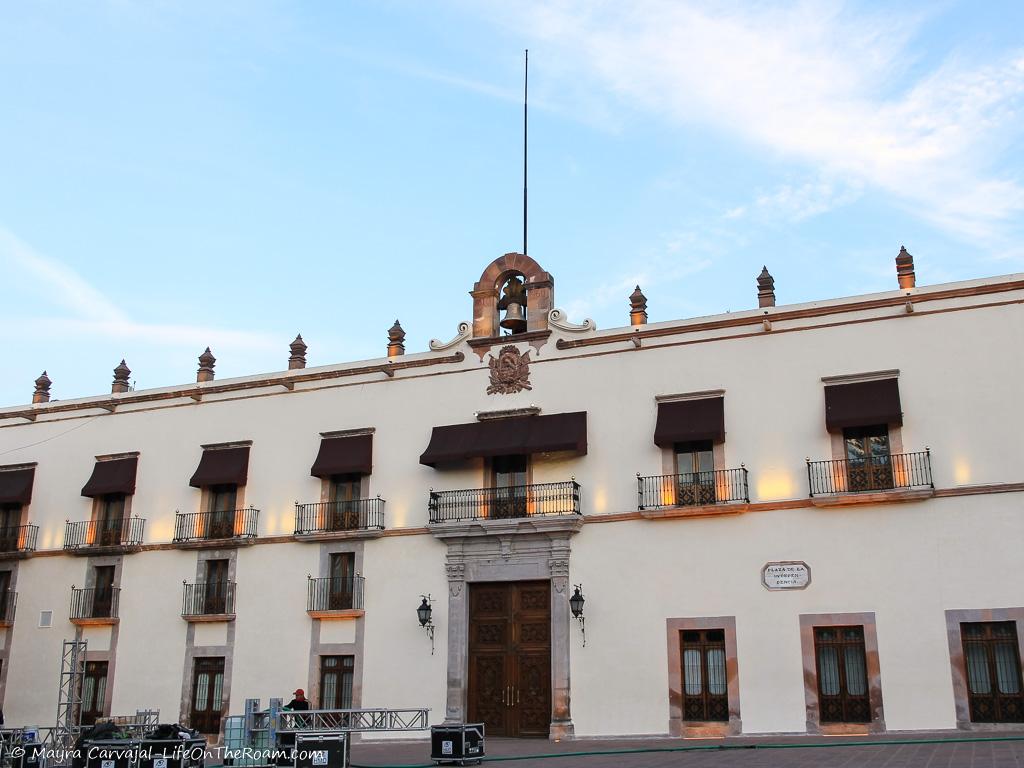
It was 1810, Mexicans no longer wanted to be a colony of Spain. They wanted to be free and take the reins of their country.
To help this cause, under the disguise of an innocent book club, Josefa Ortíz de Domínguez (La Corregidora) hosted secret meetings under her roof to support the national independence movement.
As soon as the government of the New Spain found out about the conspiracy La Corregidora (the Mayor’s wife) sent a message to rebels: We’ve been caught!
It marked the beginning of the War of Independence and it all happened right in this house.
Today this is a government building holding the office of the Governor of the State.
To learn more about the history and check out the murals inside take their guided tour.
Stop at the fountain in the square across the house.
Dance at the Plaza de Armas (Plaza de la Independencia)
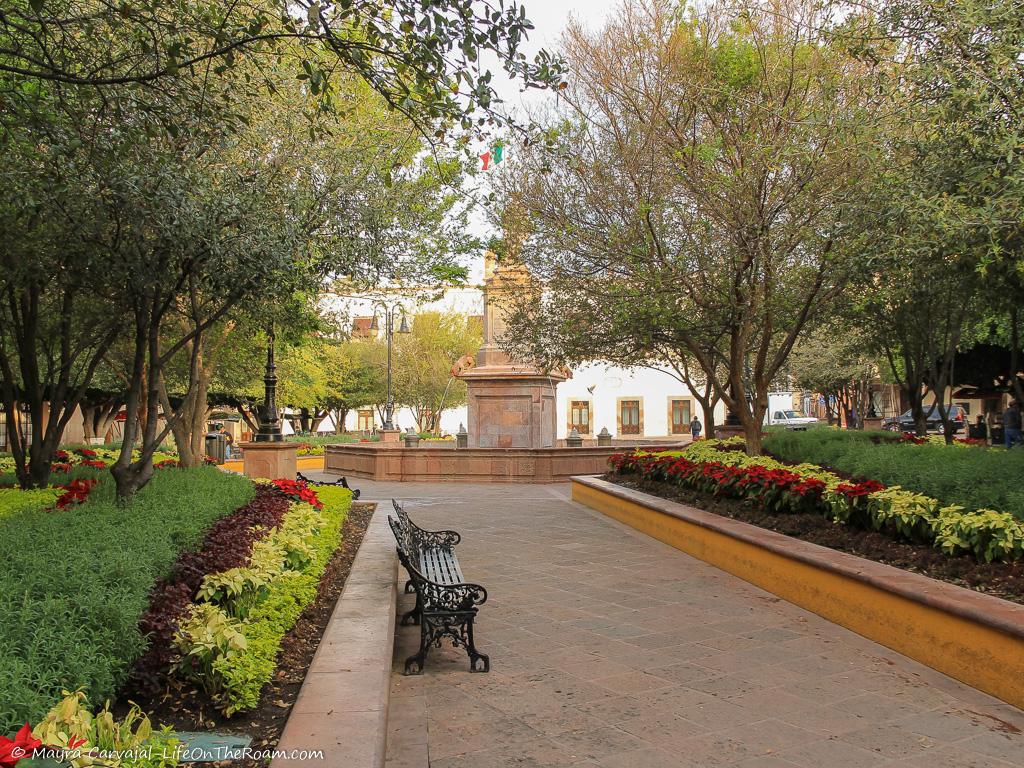
I can’t guarantee there will be a danzón while you’re there, but there’s a good chance since this is common in the squares of Mexico. It’s one of the things I love the most about the country.
No dance? No problem.
This 18th-century square is always a lively place surrounded by topiaries and gardens, with plenty of cafes and restaurants.
In the centre you can see La Fuente de Los Perritos (The Fountain of the Doggies), a cute fountain from 1843.
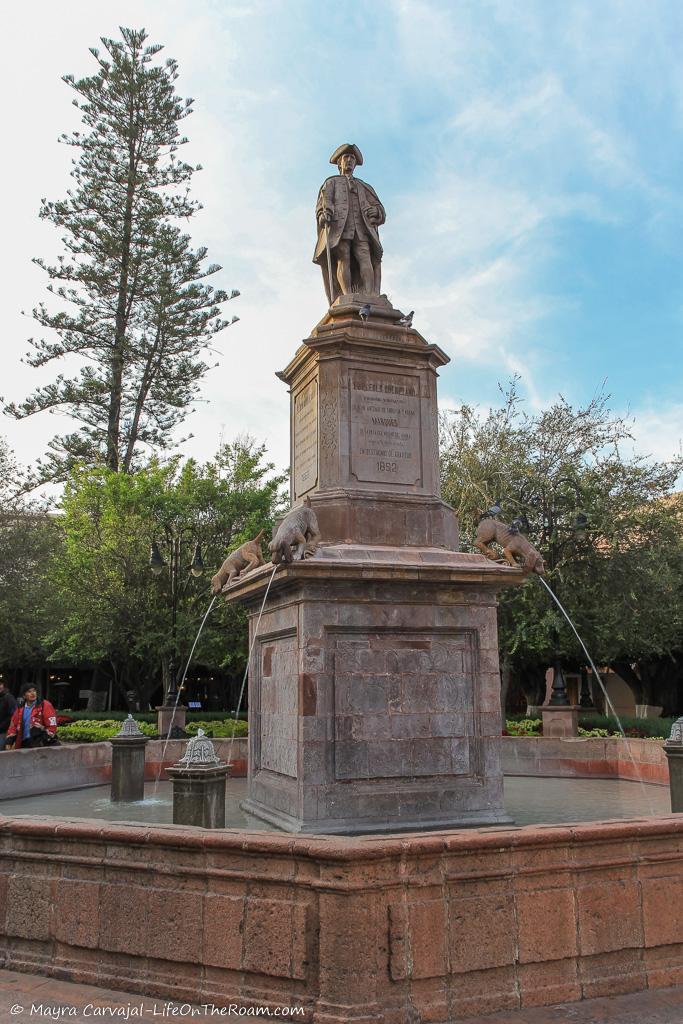
The monument is dedicated to the Marqués de la Villa del Villar del Aguila, the same Marquis who commissioned the construction of Querétaro’s aqueduct.
Walk down 5 de Mayo to see more cool fountains.
Check Out the Artistic Fountains and Monuments
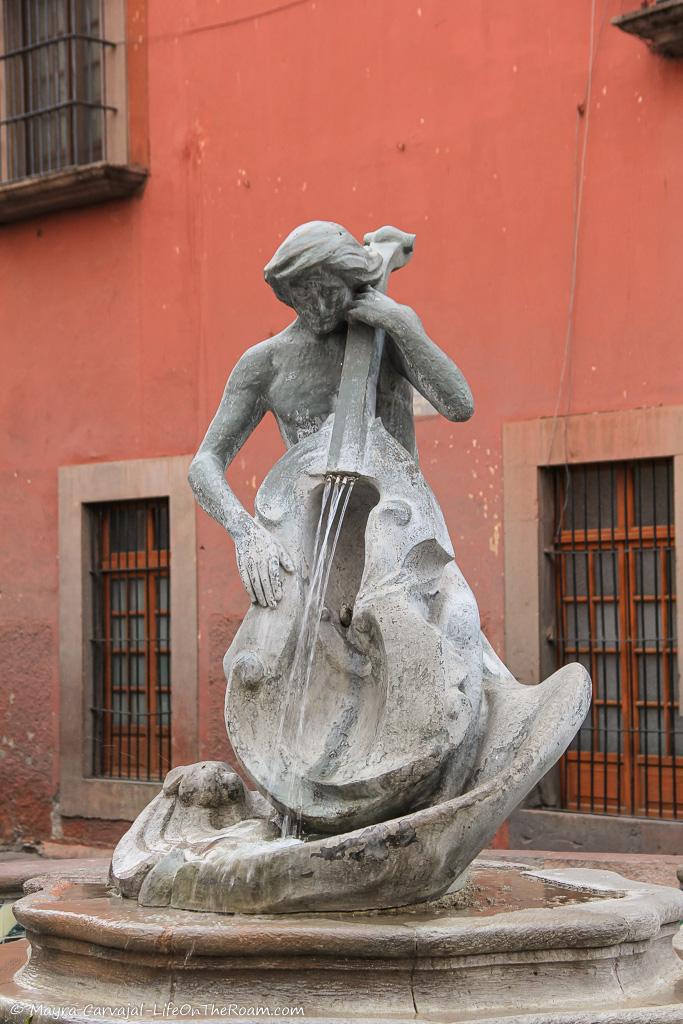
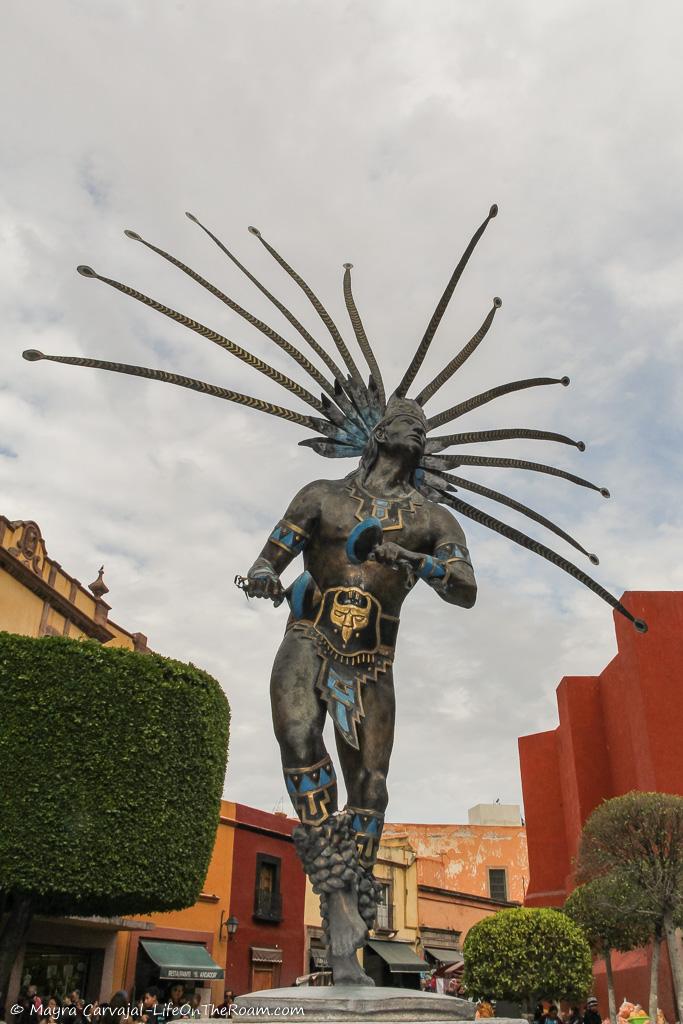
Head west down the Andador 5 de Mayo to see the fountain of some sort of Triton playing a violoncello, and the fountain of El Danzante Conchero Chichimeca (The Dancer), with a bronze sculpture by Juan Velasco Perdomo.
You may see danzantes wearing traditional costumes in the squares during festivities.
Keep going down until you reach Calle Corregidora (you’ll see a big square with many trees) and turn right to see the Monumento a La Corregidora, by Carlos Noriega.
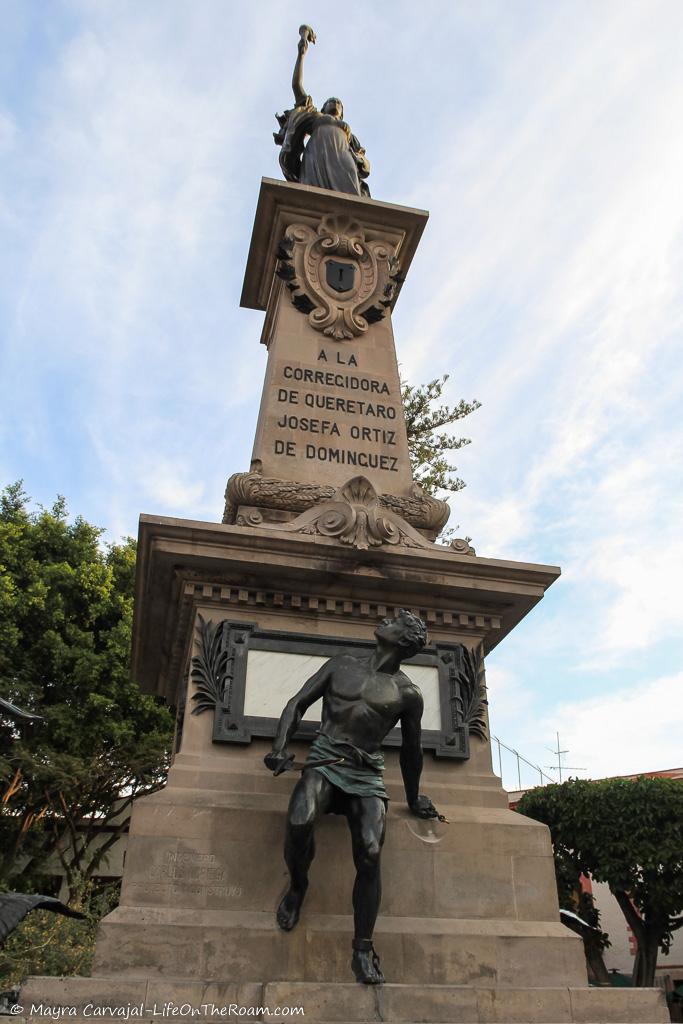
This 1910 monument is dedicated to the heroine of the independence movement whose house you visited at the start of the itinerary.
If you’re wondering what’s with the lock right below her, that’s a reference to the lock through which she handed a message to Ignacio Pérez to let the conspirators know that the government had unfolded their plans.
About two blocks from here, on Hidalgo 4, you can visit Casona de la República, a boutique hotel built inside a restored convent from 1614, where you can see sculptures from the 16th century. You can stay at the Casona de la República or visit the bar terrace and enjoy the wonderful view.
Retrace your steps to go back to the big square. It’s known as Jardín Zenea and it’s my favourite: tons of trees, beautiful landscaping, an Art Nouveau gazebo, and the domes of the church of San José de Gracia and the church of San Francisco in the background.
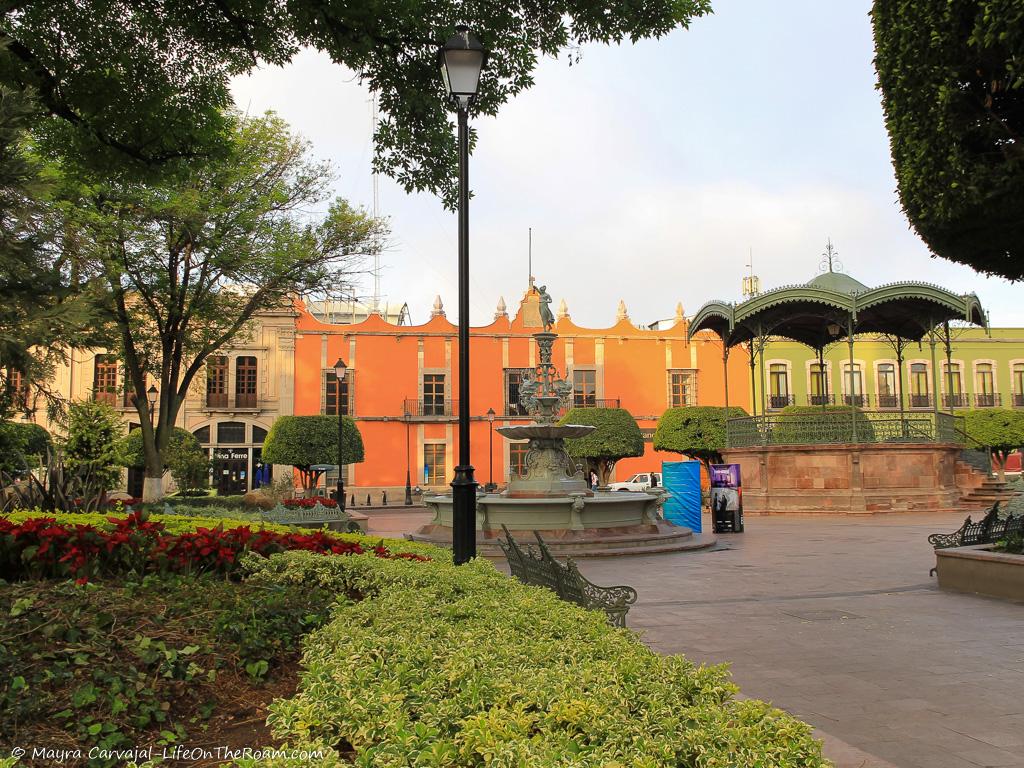
Many moons ago this was the atrium of what used to be a Franciscan convent across the street.
It became a square in 1874, with a historic fountain in the centre featuring the goddess Hebe (the goddess of youth) pouring water from the top, surrounded by swans.
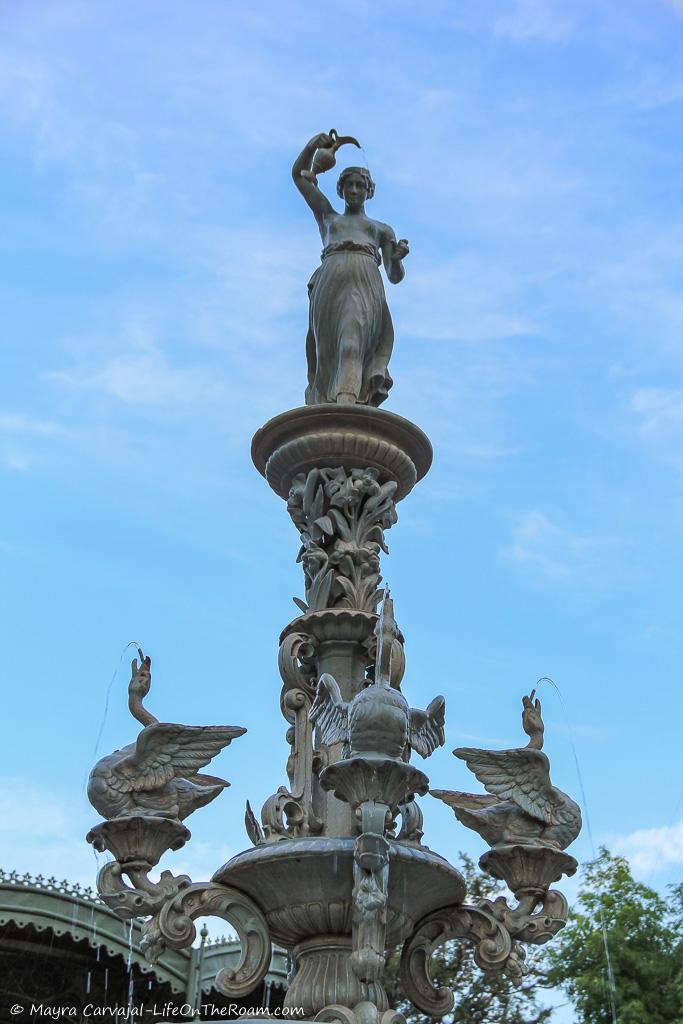
Cross the street towards the Church of San Francisco to visit a great museum.
T
V
Find Out About the Local History and Culture at the Museo Regional de Querétaro (Querétaro’s Regional Museum)
Right across the Jardín Zenea you’ll see the Church of San Francisco, one of the first churches in the city, built in 1540.
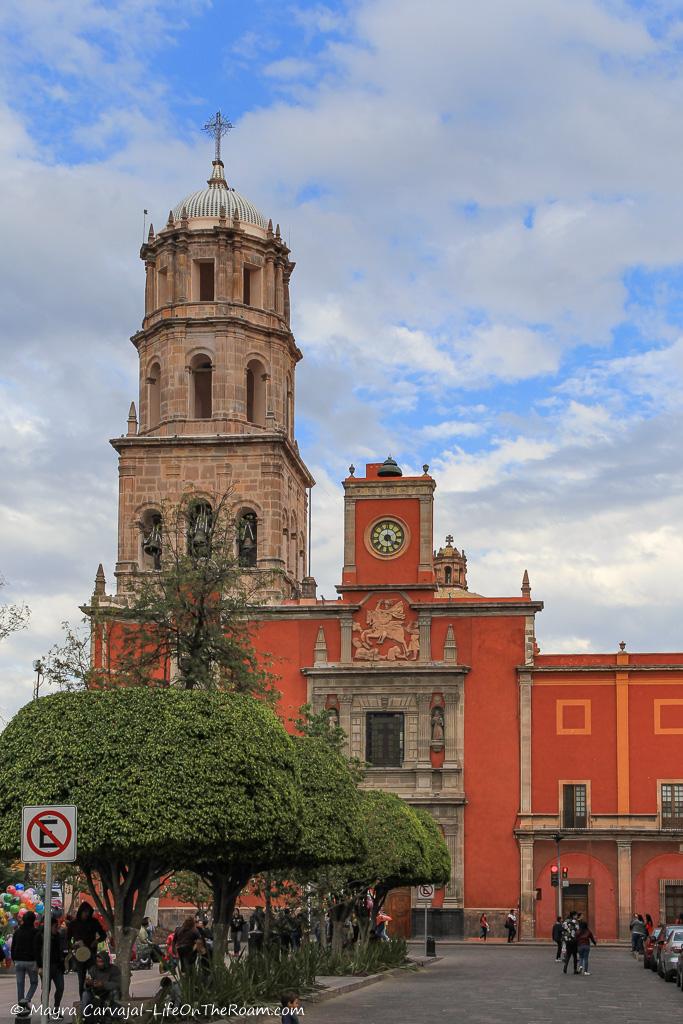
Next door is the Regional Museum in what was a former convent that played an important role in the religious and cultural life of the city from the 16th century until the mid19th century.
You’ll learn about the history of the region and the country through archeological findings and artifacts ranging from pottery, paintings, traditional garments, furniture, music, arts and crafts, and photography.
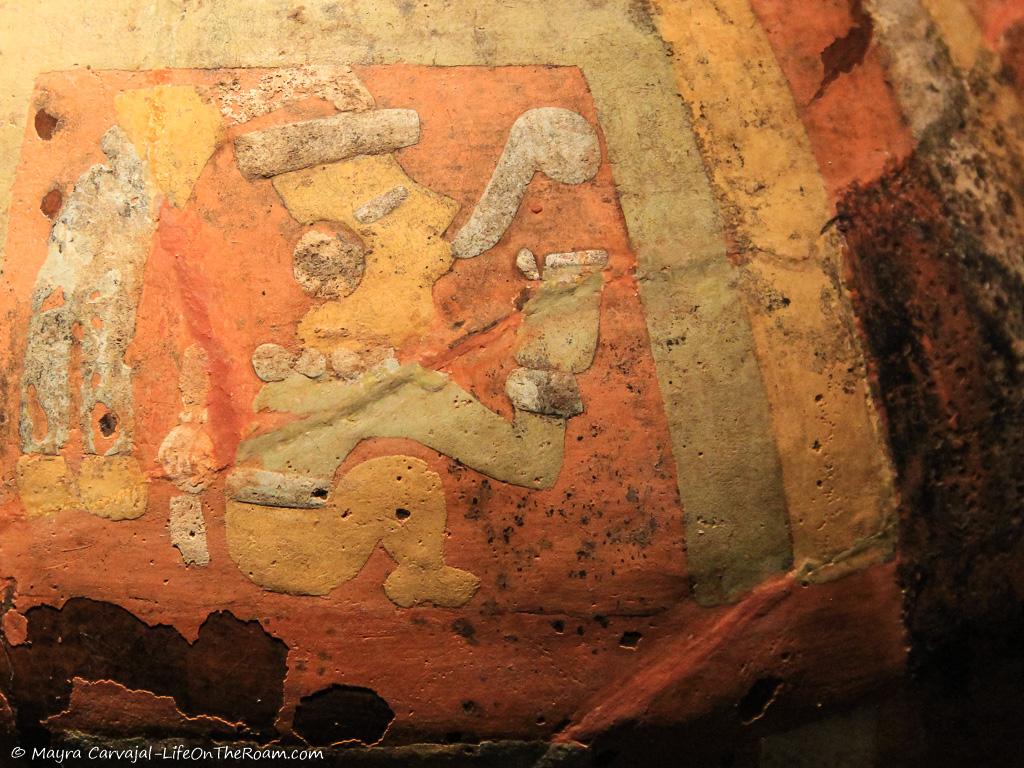
The exhibit takes you from the pre-Columbian era and the life of the indigenous population (Otomís and Chichimecas) to the colonial period ruled by the Spaniards, and the role Queretaro played in the history of Mexico in the 19th and 20th centuries.
You can also see temporary exhibits about the state, the country, and the world.
Like the Museum of Art, the building is as interesting as the exhibits with fountains, ornate ceilings, and beautiful arches.
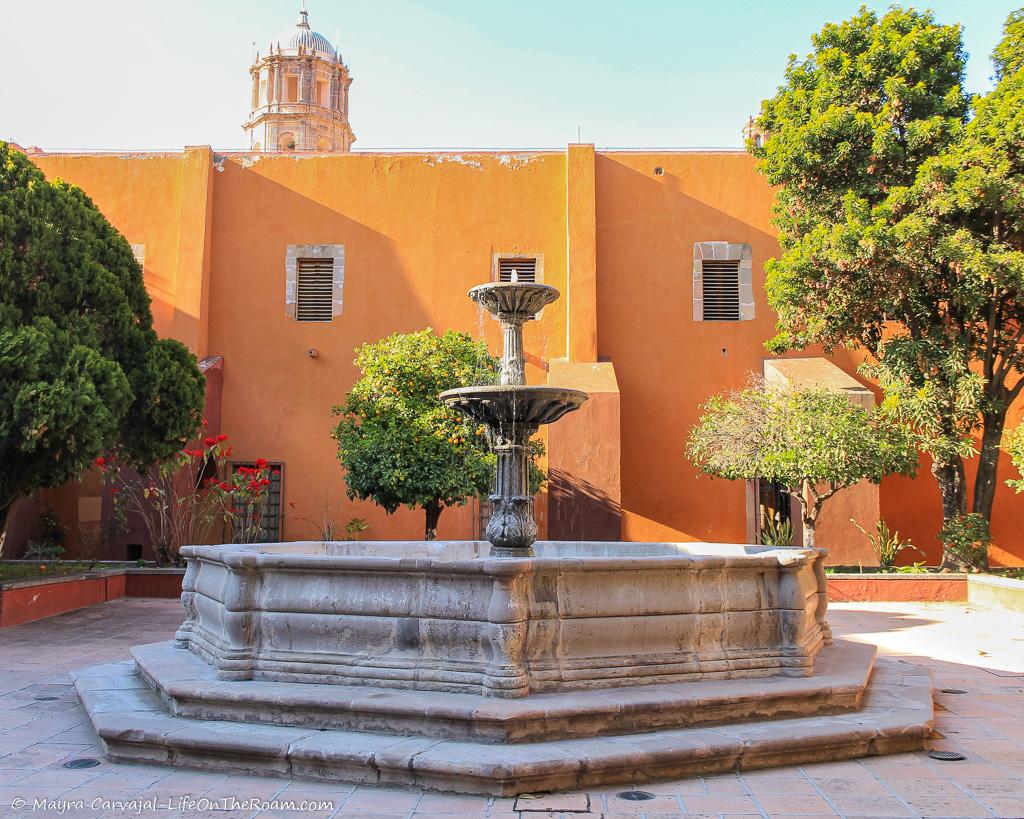
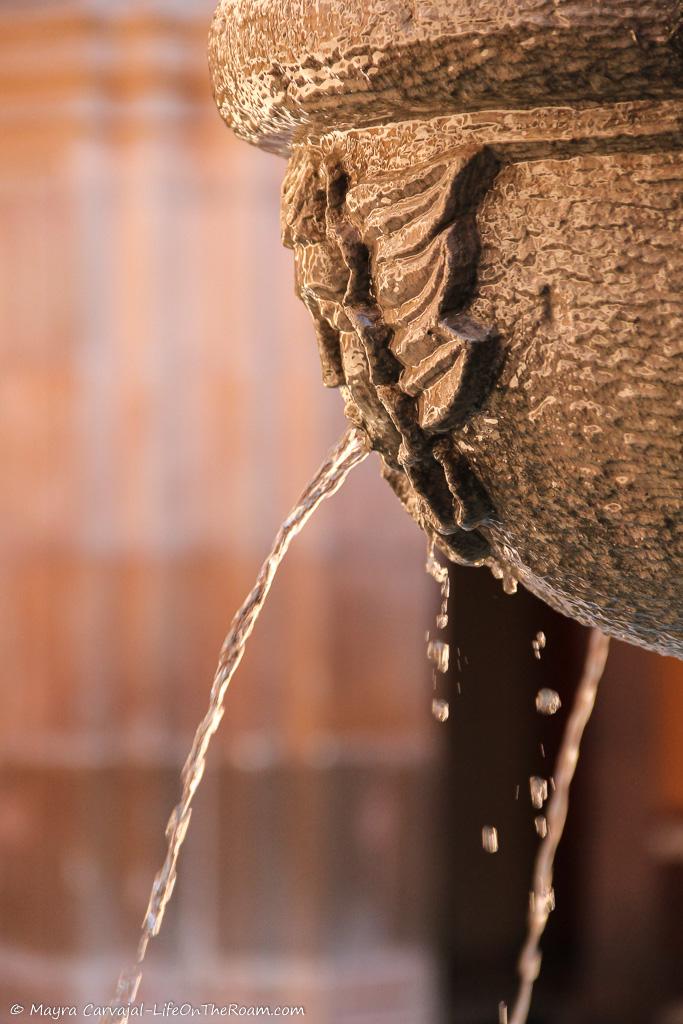
Corregidora Sur, No. 3. Historic Centre; Open Tue. to Sun.: 9AM to 6PM; Admission: MXN$ 85 (Free entrance on Sundays)
Cross the square and take Calle Francisco I. Madero for more historical landmarks.
Visit the Church and Convent of Santa Clara
On Calle Francisco I. Madero, a few feet before you reach the church there are two interesting sights.
On your left is a historical place: the Casa de la Marquesa (House of the Marquise).
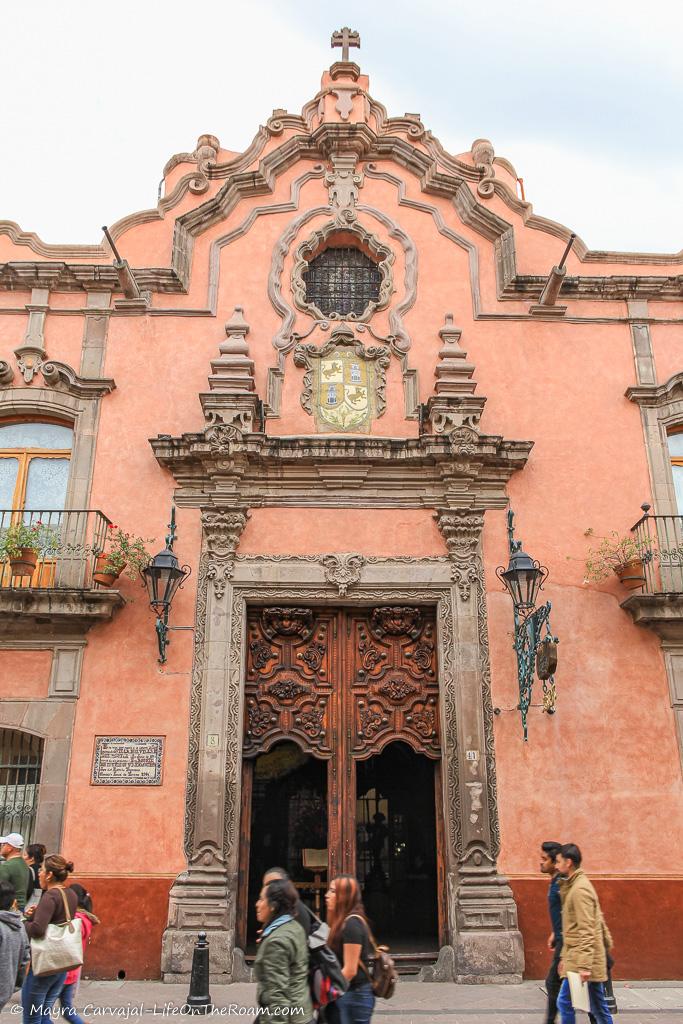
Ooooh, what’s that? You can’t help but wonder when you walk past the magnificent entrance of what was a Baroque-style mansion. You can stay at the Casa de la Marquesa or enjoy the beautiful patio to grab a bite or have a drink.
Adorning the corner of the street you’ll find one of the most beautiful fountains of the city, La Fuente de Neptuno (The Neptune Fountain) by Francisco Tresguerras.
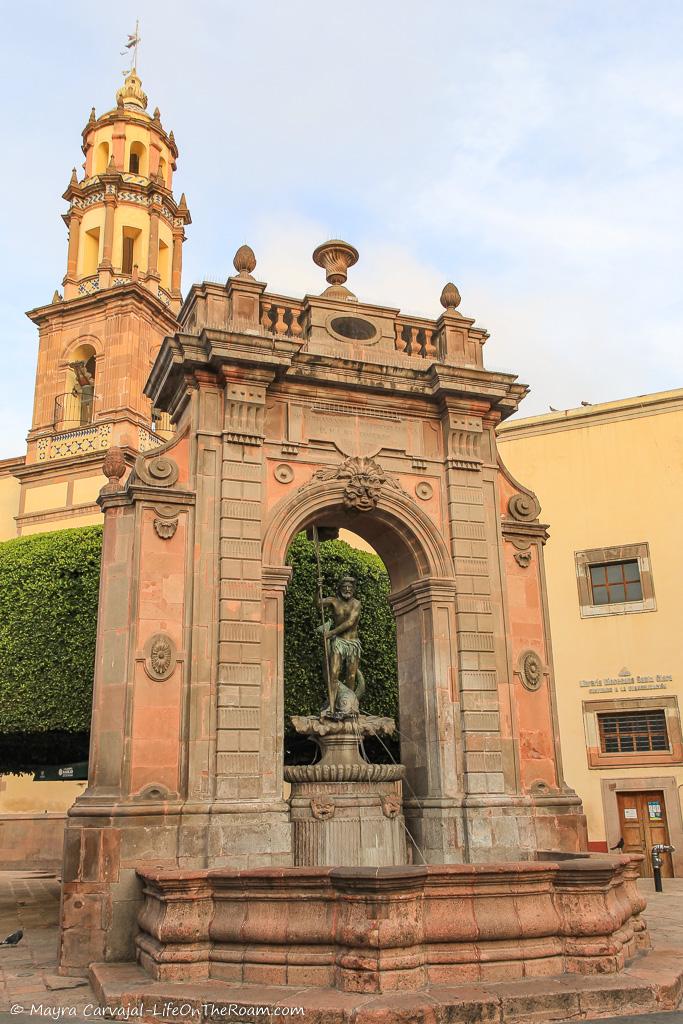
It dates back to 1797 and has Neptune standing tall, trident in hand, riding a water-spitting fish under a stone arch.
Right behind you’ll see the Church of the Monastery of Santa Clara de Jesus (Parish of the Sacred Heart), in late Renaissance style.
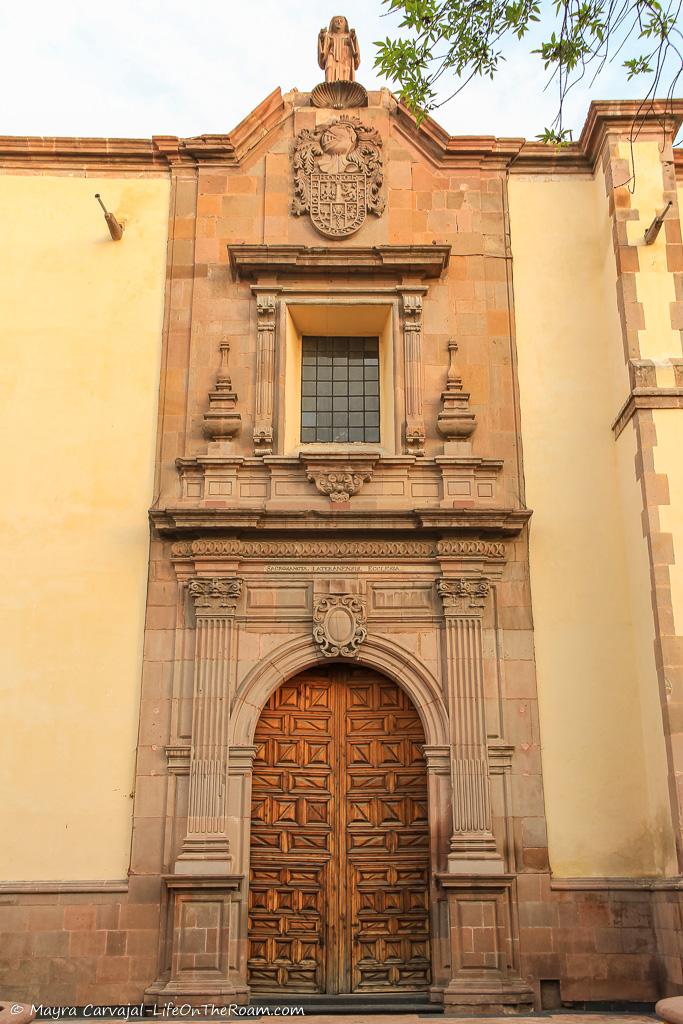
The first stone was laid in 1607 and the first temple was completed in 1633 by Francisco de Chavira. The church you see right now dates back to 1662, by architect José de Rayas Delgado.
Inside, the Baroque-style altars on the sides have over-the-top ornamentation in carved wood and gold.
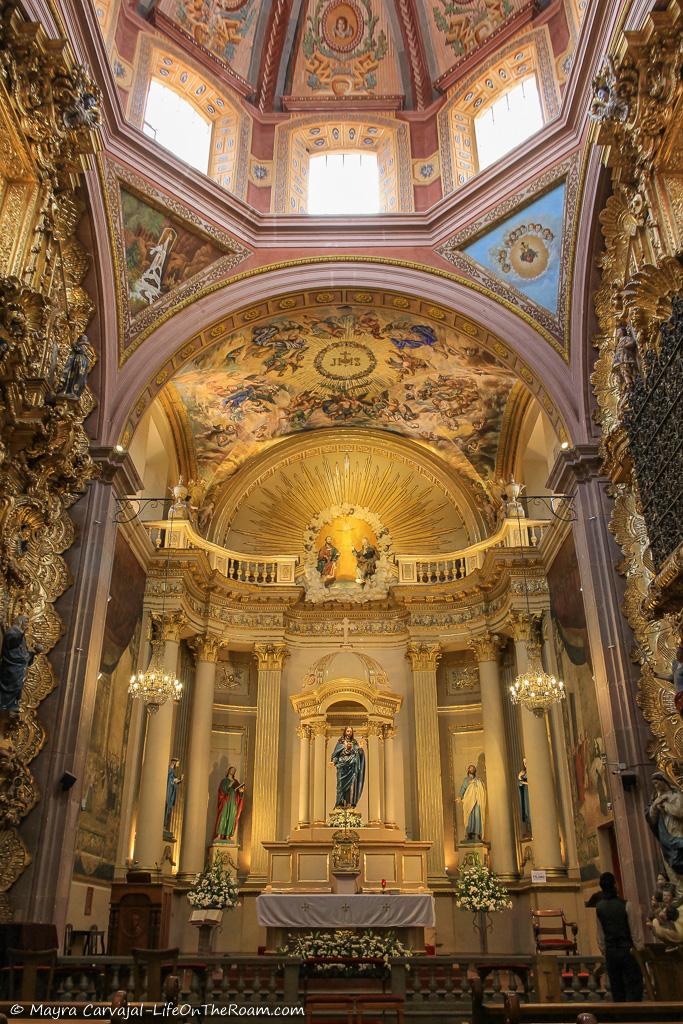
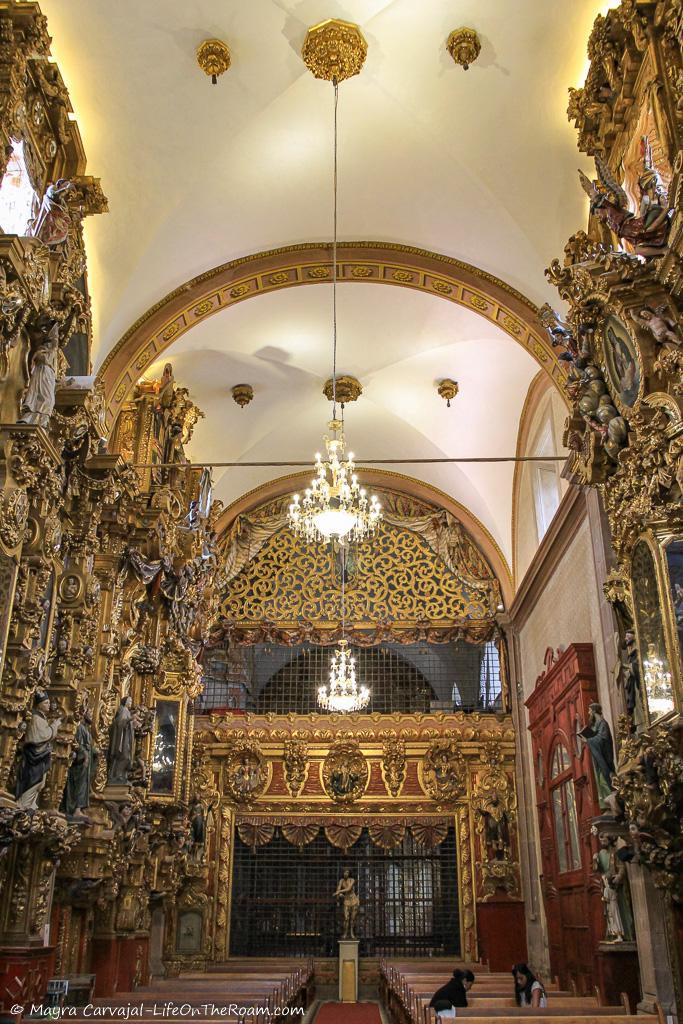
For more than 200 years the nun’s dormitories were right behind the parish. But in 1864 a law abolished the monasteries and that space has been occupied by Jardín Guerrero since 1921.
The square, with a large fountain by José Fernandez Mendizábal and surrounded by topiaries, is on the simple side, but it’s the site for concerts and other cultural activities.
Keep walking down Francisco I. Madero.
History and architecture tour of Queretaro: learn more details about the role of Queretaro in Mexico’s history and let a guide walk you through the architectural landmarks of the city.
Book your spot in this tour, with a rating of 5/5 based on more than 30 reviews.
A
Visit the Old Oratory of San Felipe Neri (Cathedral of Querétaro)
One block away from Santa Clara you’ll find the Cathedral of San Felipe Neri.
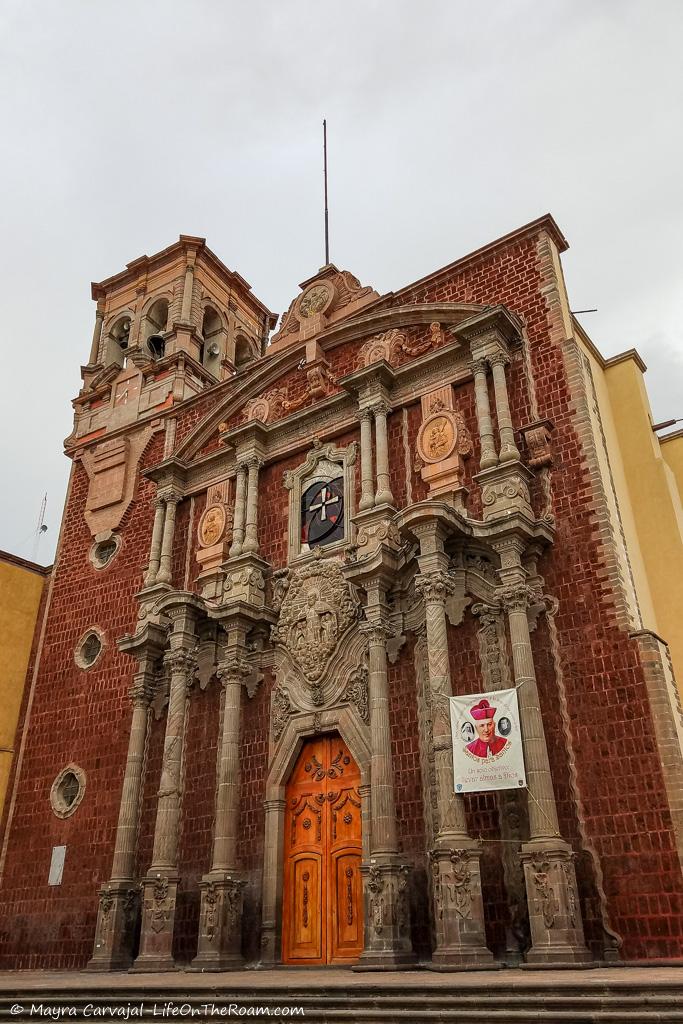
The construction of the building, with a baroque to neoclassical style, started in 1786 and finished in 1805, becoming a cathedral in 1931.
Walk along Calle Melchor Ocampo towards Calle José María Pino Suárez and head east as if you’re going towards Jardín Zenea.
Marvel at the Cloister of San Agustín in the Museo de Arte de Querétaro (Querétaro Museum of Art)
The Church of San Agustín was built in the mid-18th century with a Baroque style and the image of the cross in its facade.
Next door, in what was the convent is the Querétaro Museum of Art. It’s the most beautiful cloister in the city and possibly in Mexico (allegedly).
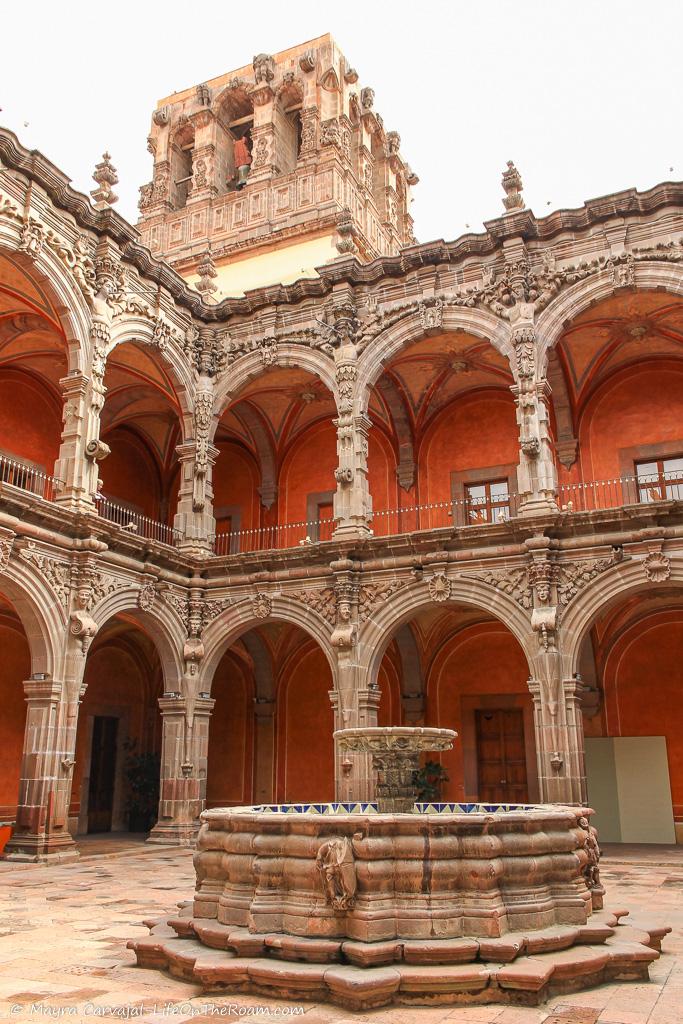
The construction of the convent finished in 1743 to house the Augustinian order and its School of Art and Philosophy.
The cloister (inner patio) is in Baroque style with a gorgeous fountain in the centre.
The Agustinian convent attached to the church became the Queretaro Museum of Art in 1988.
The building is such an art piece in itself that I spent as much time looking at the carvings and the fountain as I spent watching the exhibits.
The iconography you’ll see around the cloister, made out of cantera (a local pink stone) tells a tale of the human and divine world.
On the ground level, you see a representation of nature and the cycle of life. The gorgeous fountain in the centre, covered with glazed tiles on the inside, points to Christ as the source of eternal life.
On the second level, human figures with rainwater drainage in their mouths represent the church ministers. The water washes the sin of men, depicted by zoomorphic figures.
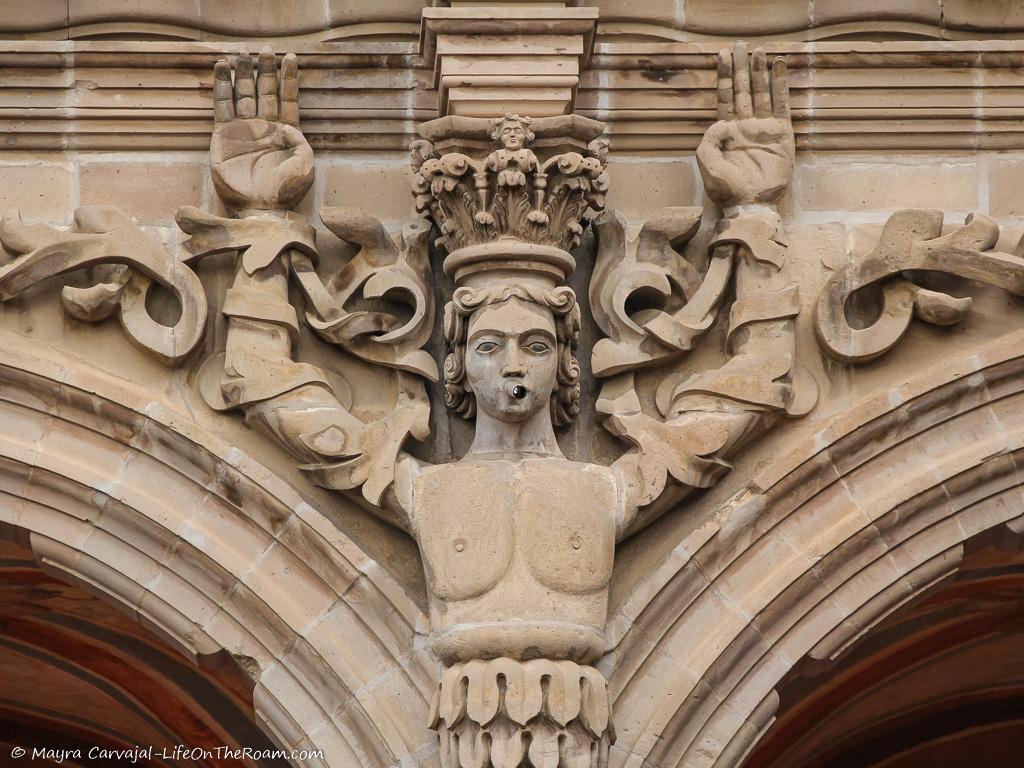
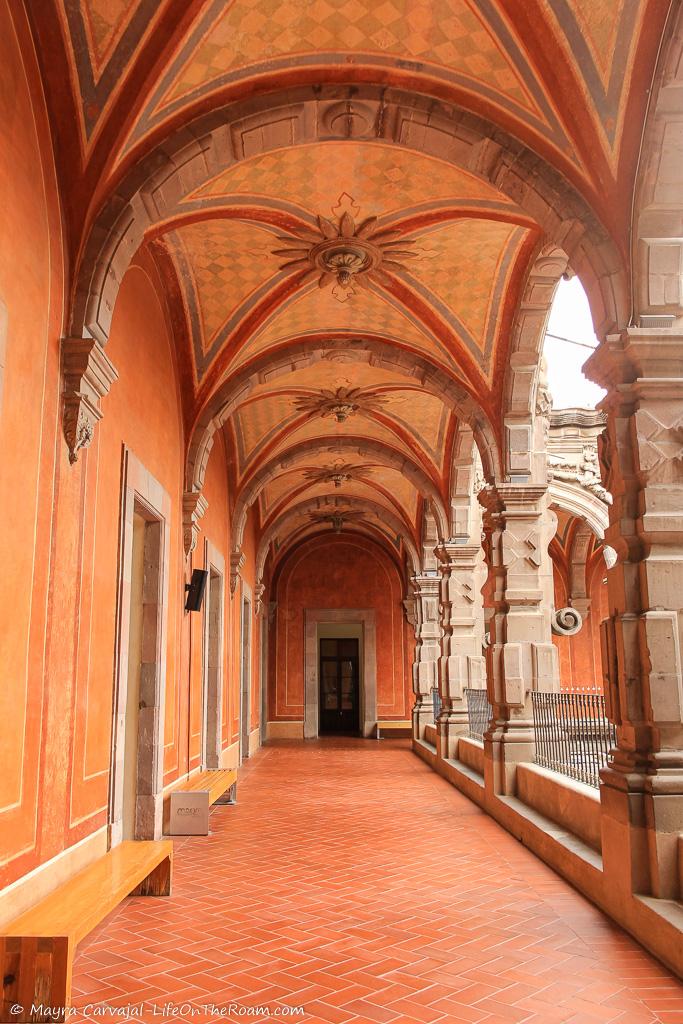
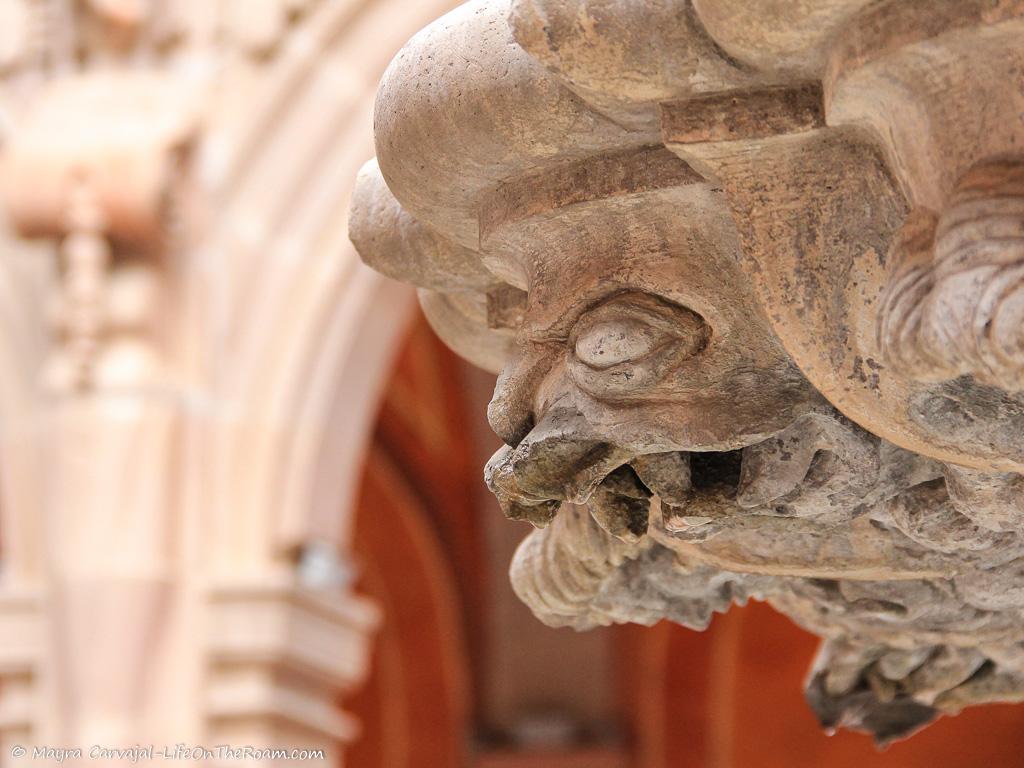
At the top, in the ceiling, lies the Kingdom of Heaven.
The museum has temporary exhibits featuring temporary exhibits a permanent collection including contemporary sculptures and incredible wooden carvings from the 18th century.
Experience the Local Cultural Scene
There’s always something happening in the squares, the galleries, and the theatres set up in the lovely inner patios.
One block from here on Calle Independencia is the Plaza Constitución. In the 18th century, Franciscans planted their fruit and veggies right here before the space became a market.
The square isn’t the prettiest, but there may be cultural events going on while you’re there making it worth the visit.
On the same street, one block west is the Jardín del Arte (Art Garden). Don’t expect a big garden full of sculptures, but a peaceful inner square where artist exhibits and performances take place. You may find something wow or you may not see much depending on the time of your visit.
I loved the small fountain close to the entrance (on Calle Vergara Sur), with a muse playing the harp (La Fuente del Arpa).
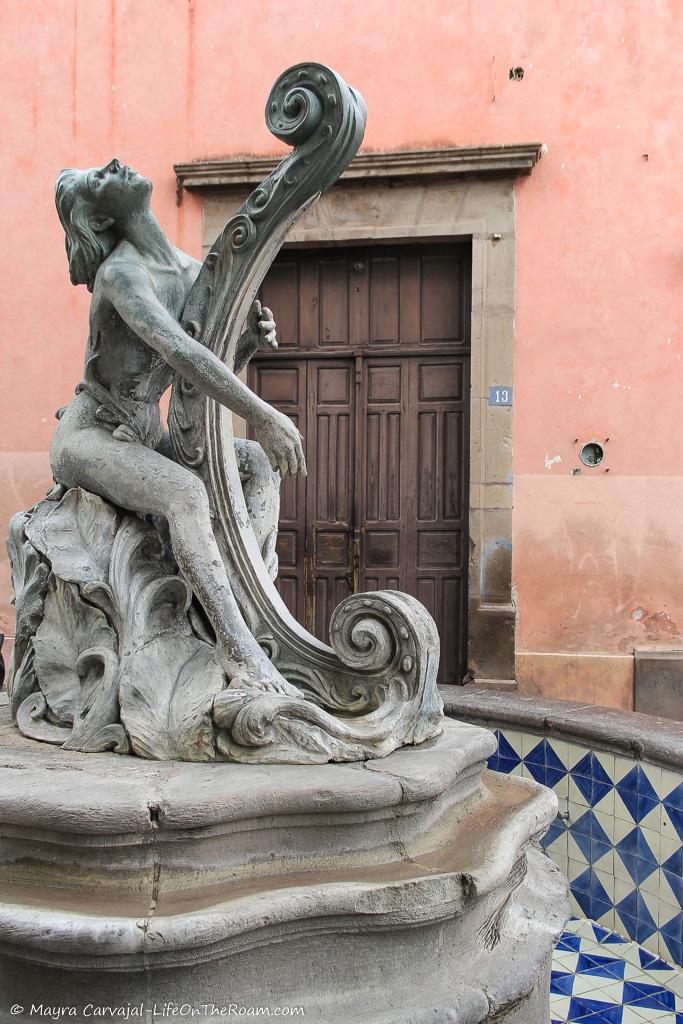
Around this area, you’ll also come across small theatres staging plays and concerts, like Corral de Comedias.
From here you can walk several blocks along Calle Independencia or explore some side streets until you reach the church and convent of Santa Cruz.
Learn about History and Legends at the Church and Convent of Santa Cruz (Holy Cross)
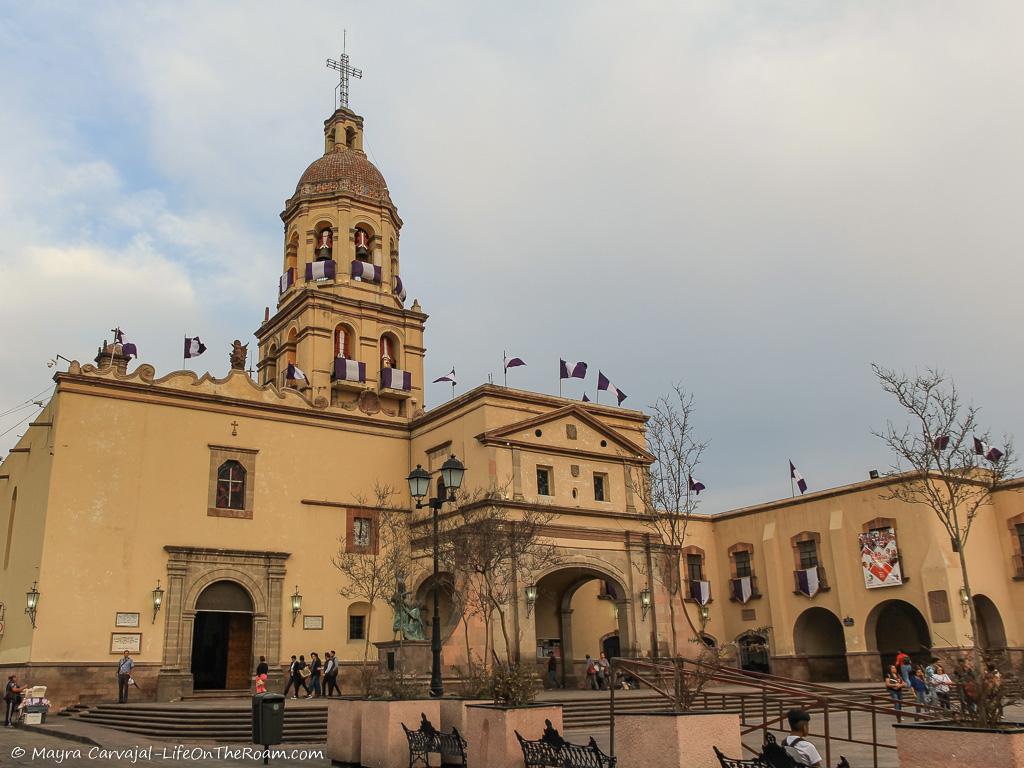
You’re standing on San Gremal Hill, the battleground where the Spaniards sealed the conquest of Querétaro in 1531. According to the legend, the Otomí indigenous warriors saw a cross in the sky during the battle, leading to their surrender.
The Franciscans built the convent and a church in the 17th century, the latter housing in the main altar a stone cross sculpted in 1531, referencing the miraculous cross (as per the legend). On the sides, you’ll see altars carved in the local pink stone in Baroque and Neoclassical styles.
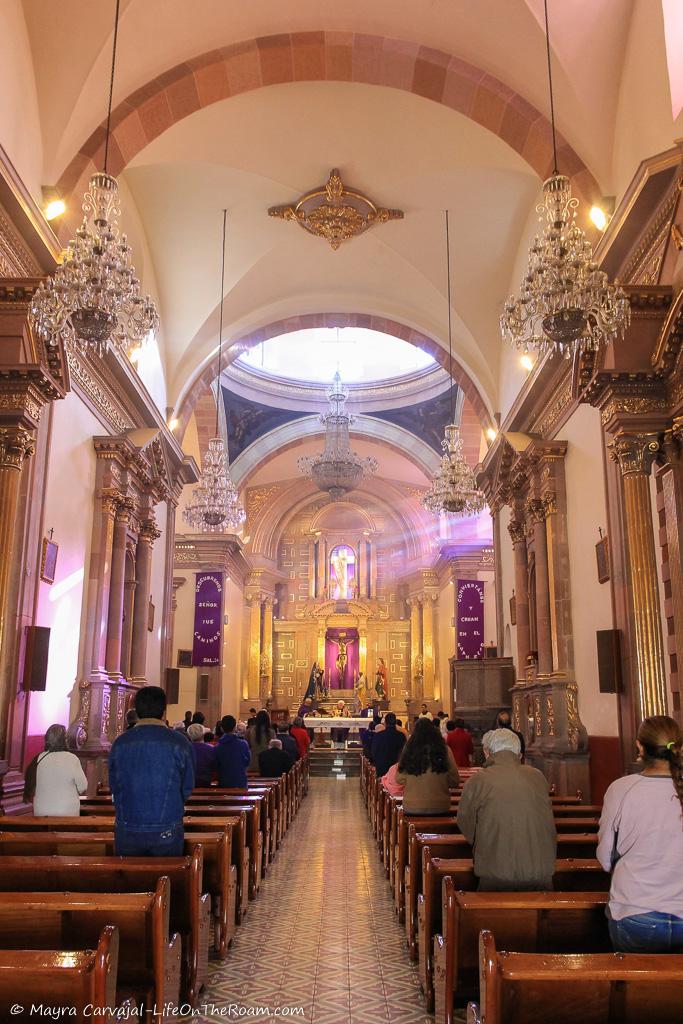
Next door they built the convent of Santa Cruz de Los Milagros, completed in 1815, another source of history and legends.
One of the curiosities is a tree from the 17th century named the Arbol de la Cruz (the tree of the Cross), with thorns in the shape of a cross. Legend says it spruced out of a cane belonging to a devoted evangelizer, Fray Antonio Margil, who stuck it in the garden the last time he visited Querétaro.
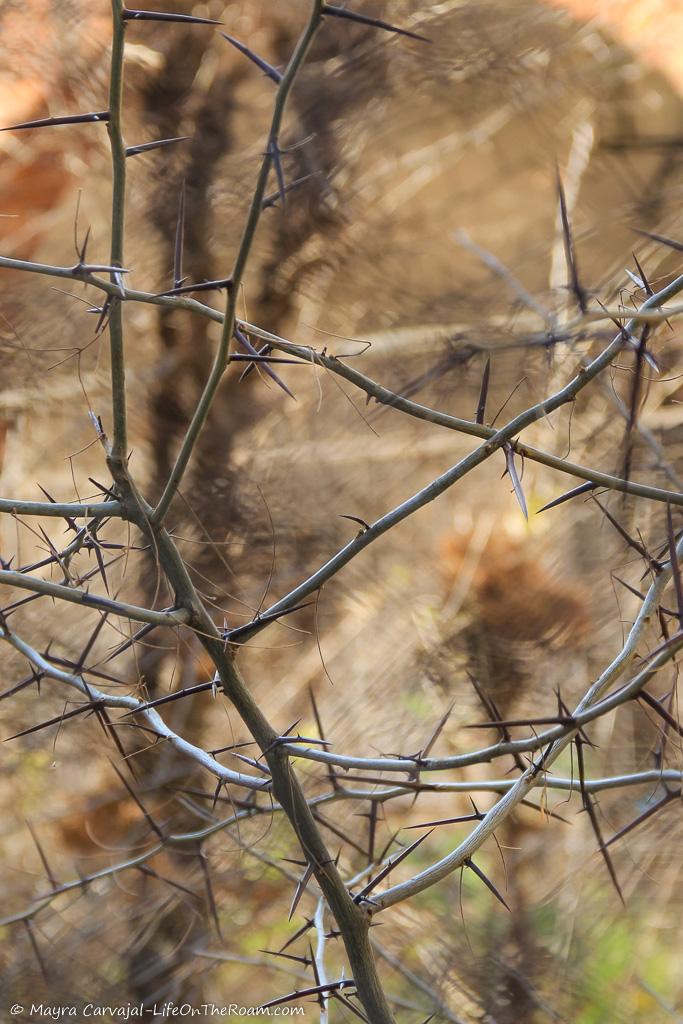
People said the mysterious tree started growing from the cane after his death.
In 1867, for a short period of three months, Emperor Maximilian of Habsburg used the convent as his headquarters before being jailed and sentenced to death.
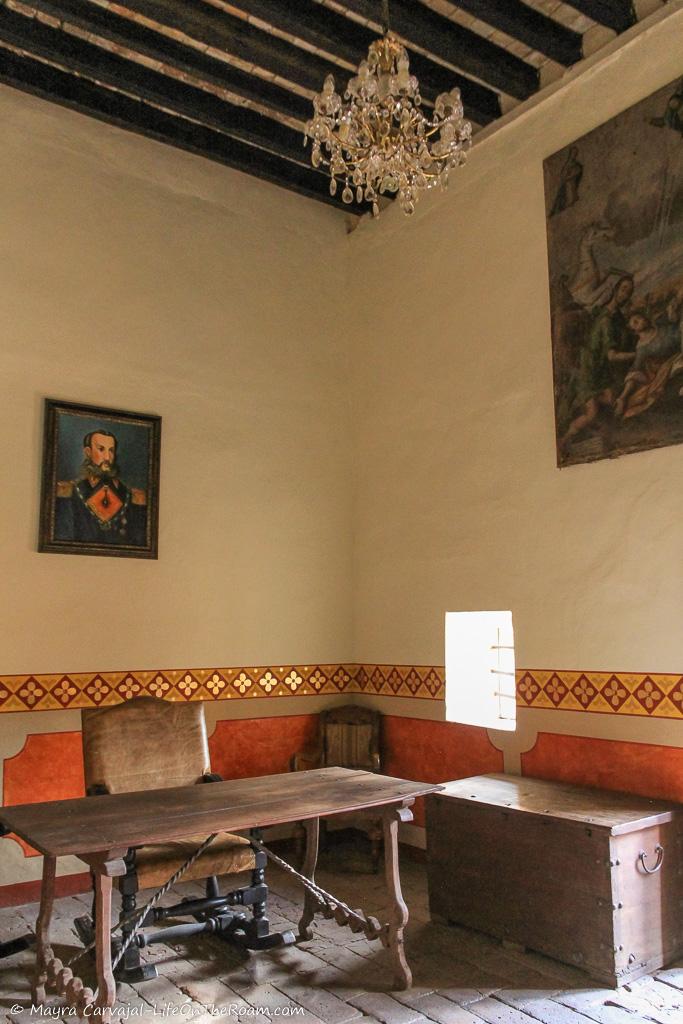
You can also see the old kitchen of the convent and the wells. The convent had the first serve for clean water coming from La Cañada spring via the aqueduct, which ends inside its walls.
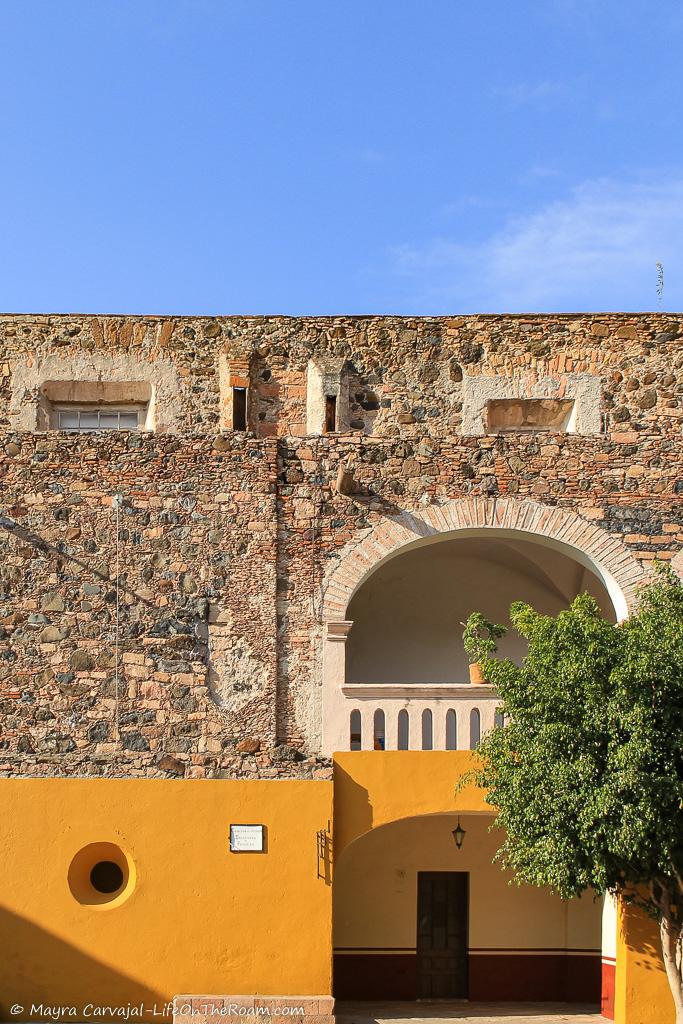
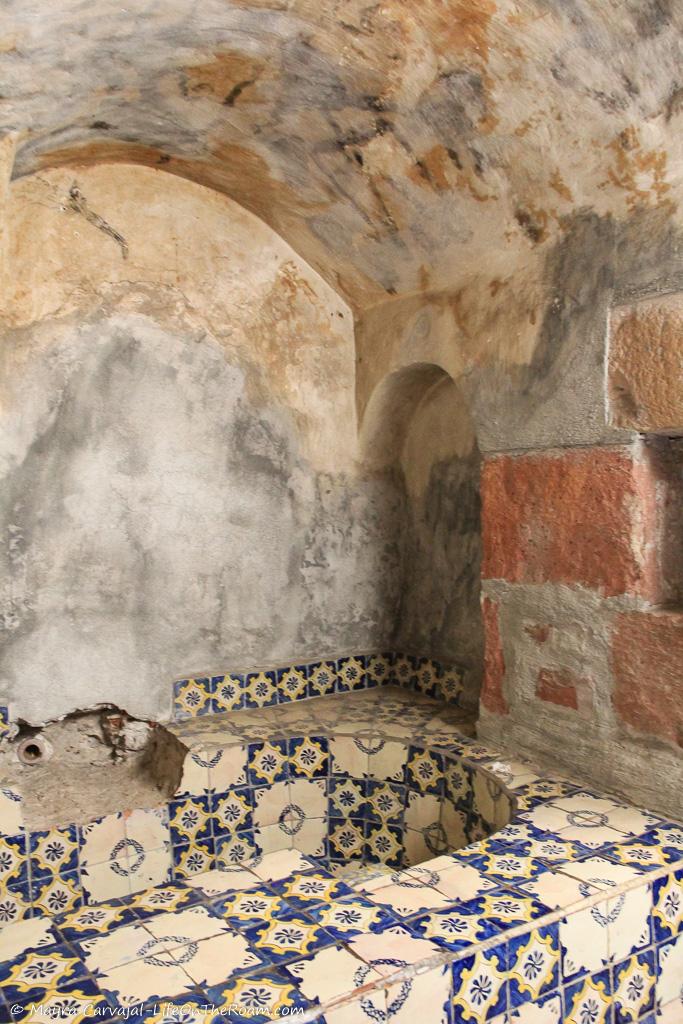
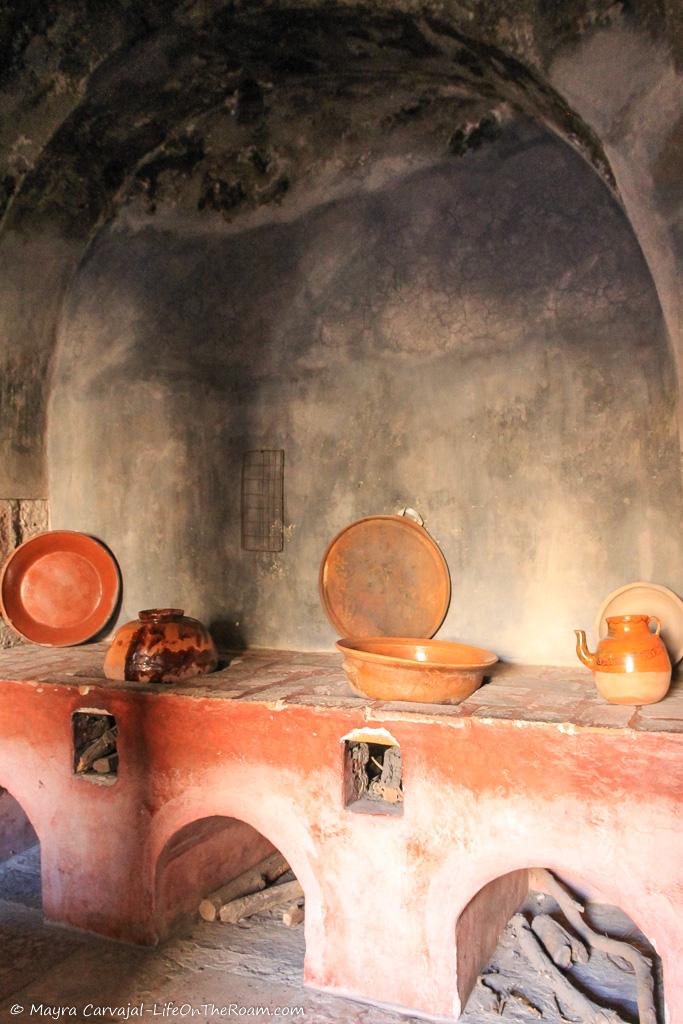
It also has the distinction of having the first caja de agua (literally “water box” or fountain) of the city. La Fuente del Pilar was built in 1735, with underground pipes that distributed the water to the other cajas. You can still see it today across the square, on Calle Manuel Acuña.
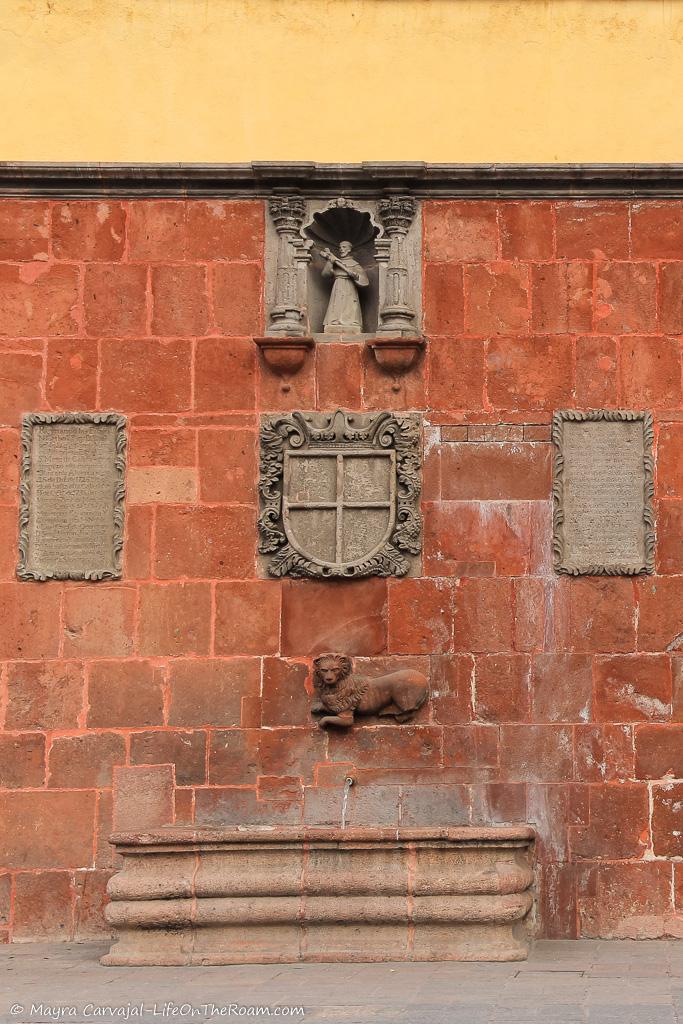
During festivities you may see the danzantes concheros doing their dance in the big square before the church. If you have a chance don’t miss it. Beyond the dance the elaborate traditional costumes are spectacular.
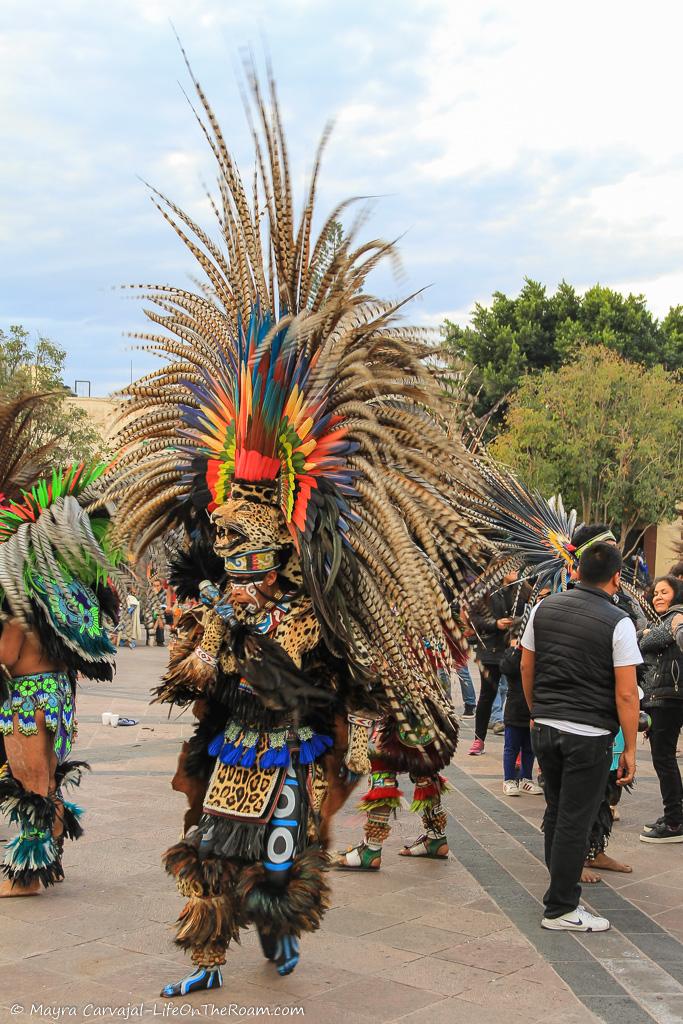
You must take a guided visit to see the convent (20 pesos p/p).
From here keep walking East taking Ejercito Republicano until you reach the lookout.
Enjoy the View of the City and the Aqueduct from Mirador de Los Arcos (The Arches Lookout)
People are getting sick! Everything is so dirty! We need clean water, please!!!
The capuchin nuns begged for the city to have access to clean water and their prayers were answered in the form of an aqueduct.
The same Marquis whose monument is in the Plaza de Armas commissioned the construction of the hydraulic system, built between 1726 and 1735.
The arches of the aqueduct are a symbol of the city and an International Historic Civil Engineering Landmark, carrying water from La Cañada Springs to the city and to the cajas de agua (“water boxes” or fountains).
Some cajas still remain as a testimony of that time.
From the mirador you’ll see the last section of the 74 stone arches stretching more than one kilometre, measuring 23 metres at its highest point. It’s one of the longest in Mexico.
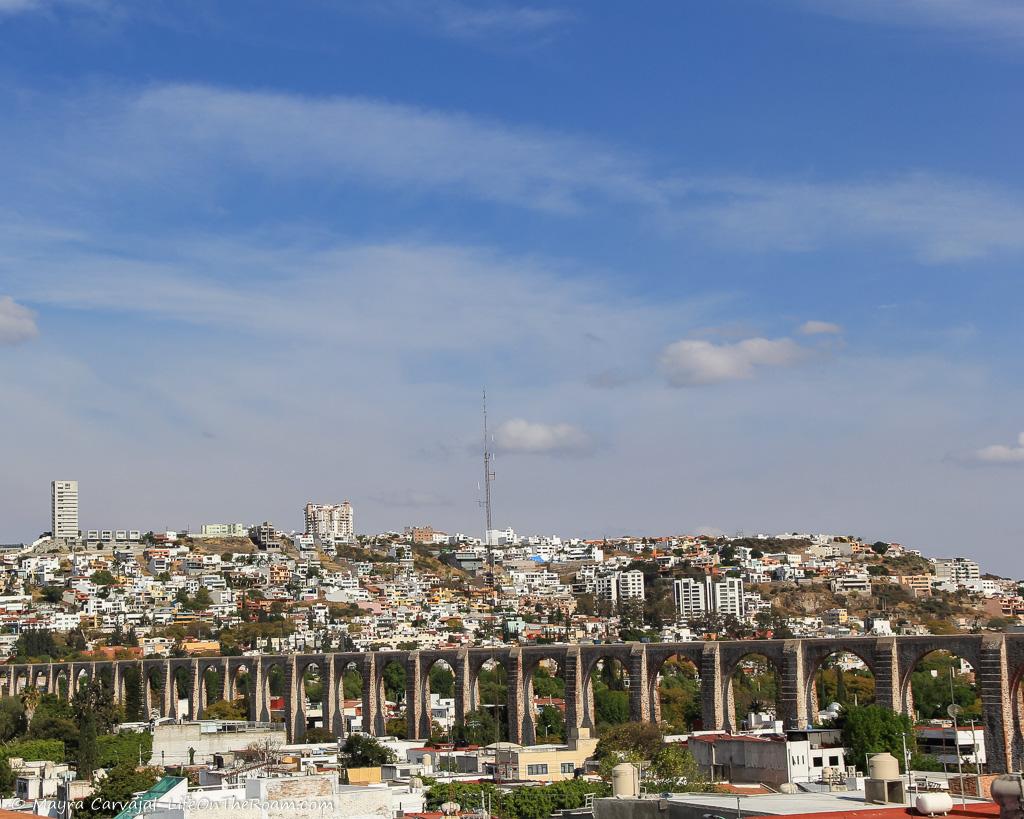
You can walk towards the Aqueduct if you want to take a closer look and also check out the sculptures underneath.
On your way there you can stop at the Mausoleum of La Corregidora and the pantheon where important regional figures have been laid to rest.
Visit the Site that Marked the End of the Second Empire: El Cerro de las Campanas (Hill of the Bells)
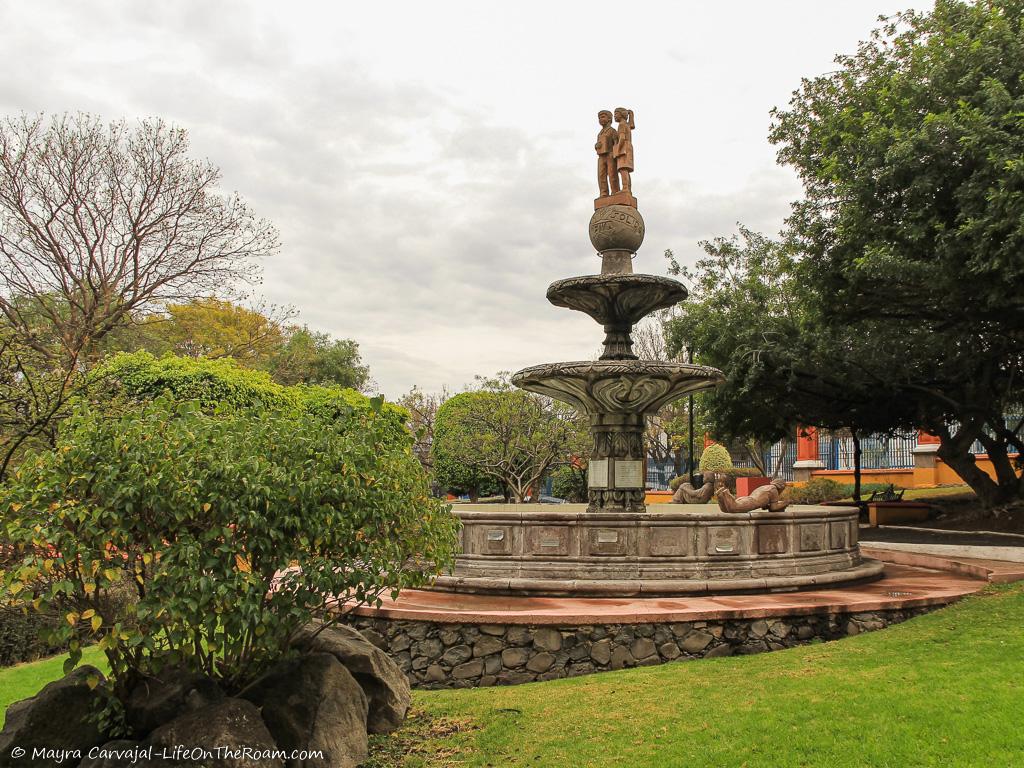
Besides having beautiful gardens and fountains, this site has a huge historical significance for Querétaro and the country.
In 1862 Mexico owed money to France, who said: Show me the money!, and with that excuse they invaded Mexico, taking Mexico City in 1863.
President Benito Juarez, a liberal who wasn’t having it easy because the economy was in the trench, called the Mexicans to defend their sovereignty.
But the conservatives weren’t a fan of Juarez and they wanted to get rid of him, so they persuaded the archduke of Austria, Maximilian of Habsburg, to become the emperor of Mexico and unifier of the nation.
He was crowned in 1864 and the Second Empire was born.
But Maximilian pissed off a bunch of people when he ratified Juarez’s liberal policies. The big chiefs of the Catholic church weren’t happy, neither the conservatives.
Then the Monroe Doctrine came into play forcing Napoleon III to pull out the French Army, and that was it for the empire. The Juarez army returned to Mexico City with a demand: Abdicate, Maximilian!, who refused and escaped to Querétaro.
The small army he commanded was cornered, marking the victory of the Republic. Mexico was a sovereign country again.
After his arrest in the convent of Santa Cruz, he spent his final moments on this hill, where a firing squad ended his life in 1867. He was 34 years old.
The chapel commissioned by the government of Austria in 1900, Capilla de La Piedad, marks the site of the execution.
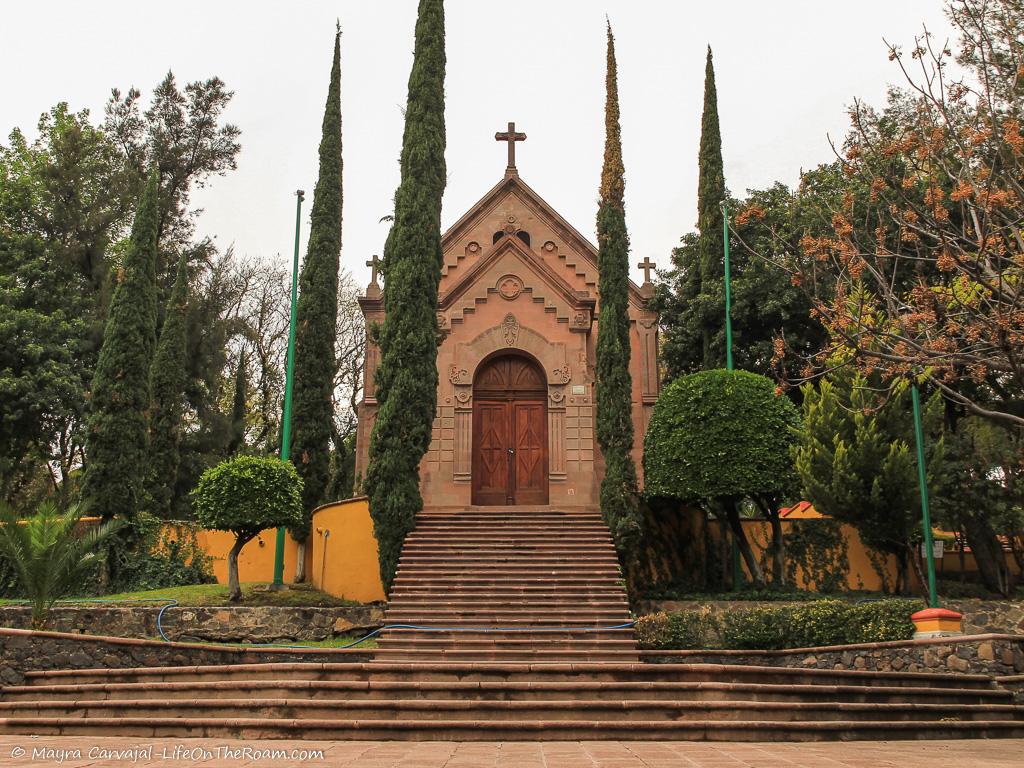
By the way, don’t look for any big bells. The name of the hill comes from the bell sound you hear when two particular stones found on this hill clash against each other.
You can walk here from the centre or you can take one of the trolley bus tours that includes the hills as a stop. It’s fun and you learn more about the history of Querétaro.
The park opens from 6AM to 6PM. Admission: MXN$5. The museum opens from 9AM to 4PM. Admission: MXN$18. Closed on Mondays. The chapel opens from 9AM to 5PM. Wed. to Sun.
Try the Pedos de Monja
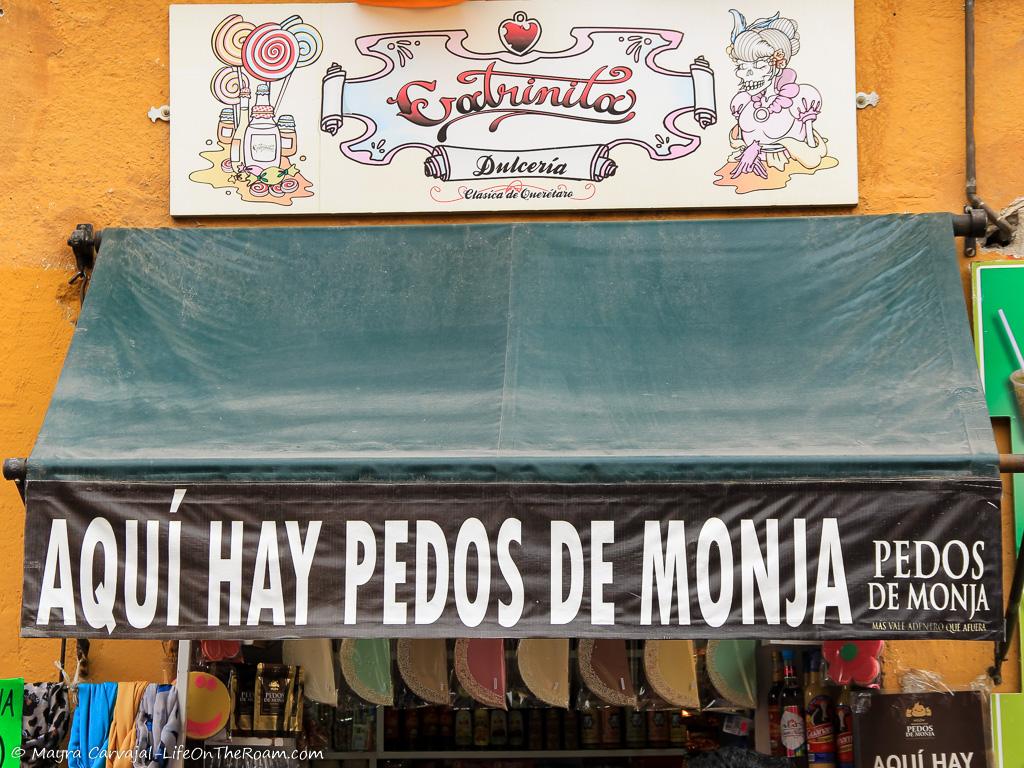
I couldn’t leave this out. It’s a truffle with either chocolate or cajeta (goat milk candy) filling, and some have liquor. You’ll find it everywhere and it’s delicious. It’s called Pedos de Monja.
Translation: nun’s farts. Yep, you read that right, it’s not a typo.
You’ve got to love Querétaro!
Day Trips from Santiago de Querétaro to the Magic Towns
A roughly one-hour bus ride will take you to nearby towns where you can spend some time puebleando, exploring their natural wonders, going on hikes, and checking out the local arts and crafts.
Or just sit in the beautiful squares and feel life going at a slower pace.
Below you can find out more about three towns in the state of Querétaro offering different fun outdoor activities.
Visit the Botanic Garden in Cadereyta de Montes
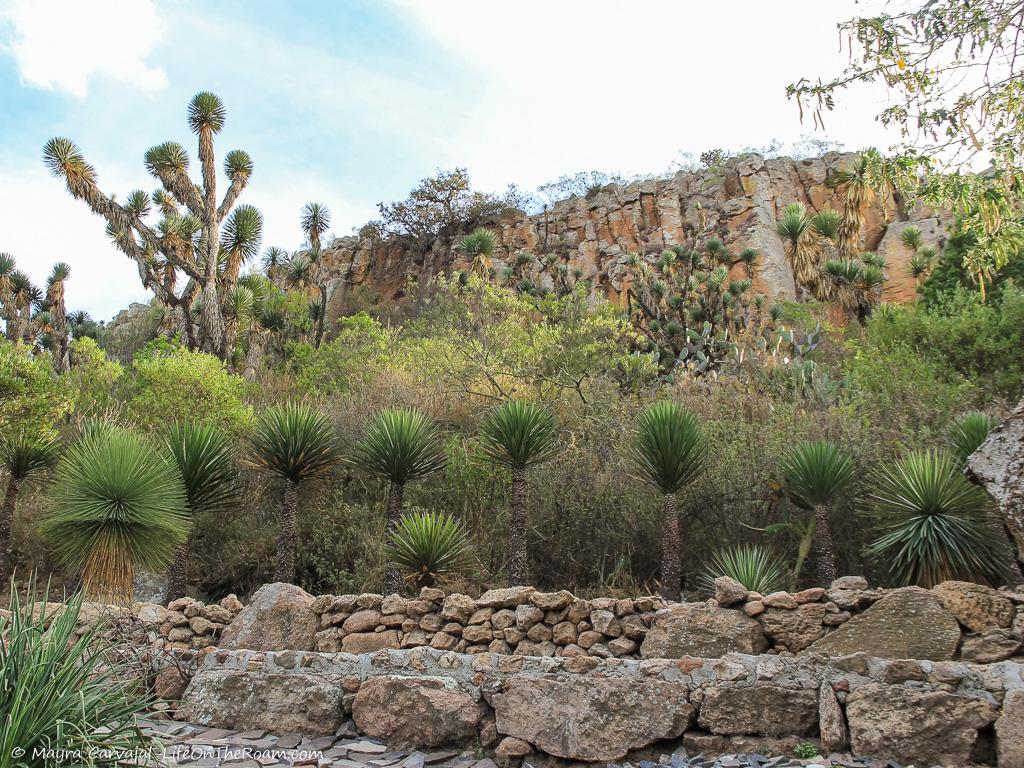
The Cadereyta’s Regional Botanic Garden is a research institution with more than 3,000 plants typical of semi-desert climates.
I loved it because it’s a different type of garden in the sense that you won’t find the usual manicured landscape with fountains, sculptures, and lined-up flower beds.
It’s a totally different landscape, but it’s no less beautiful.
You can see all kinds of cacti with tiny flowers, patterns, and colours, birds flying around the yucca forest and the stone terraces, and prickly tapestries formed by dozens of miniature cacti growing in the greenhouses.
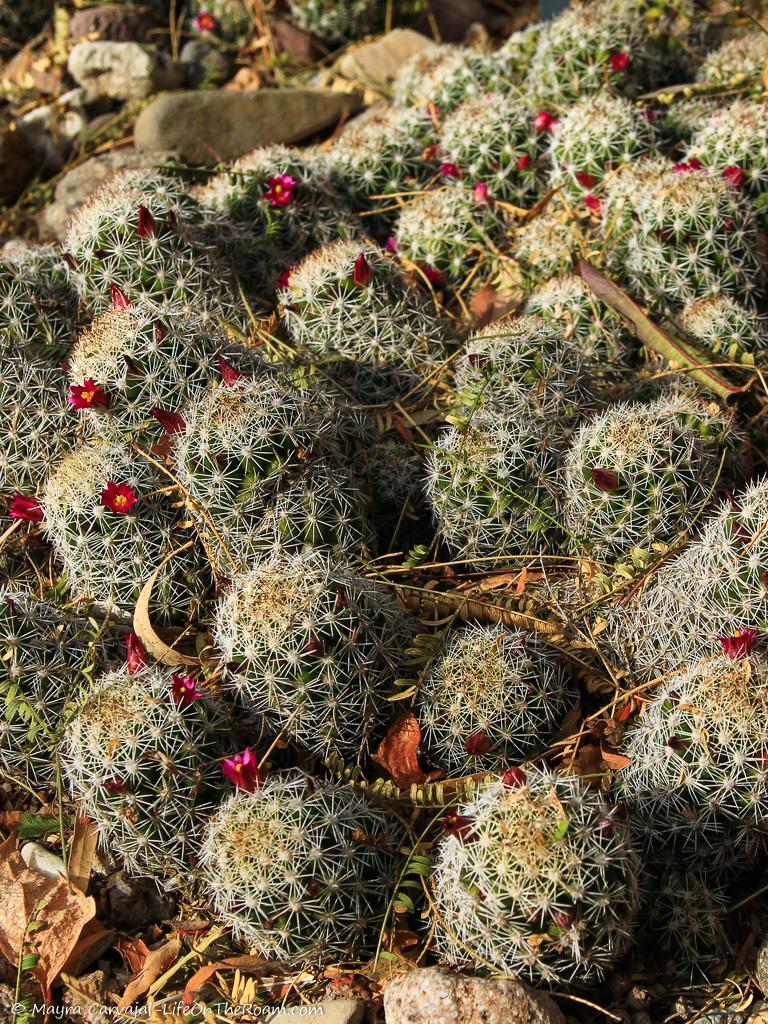
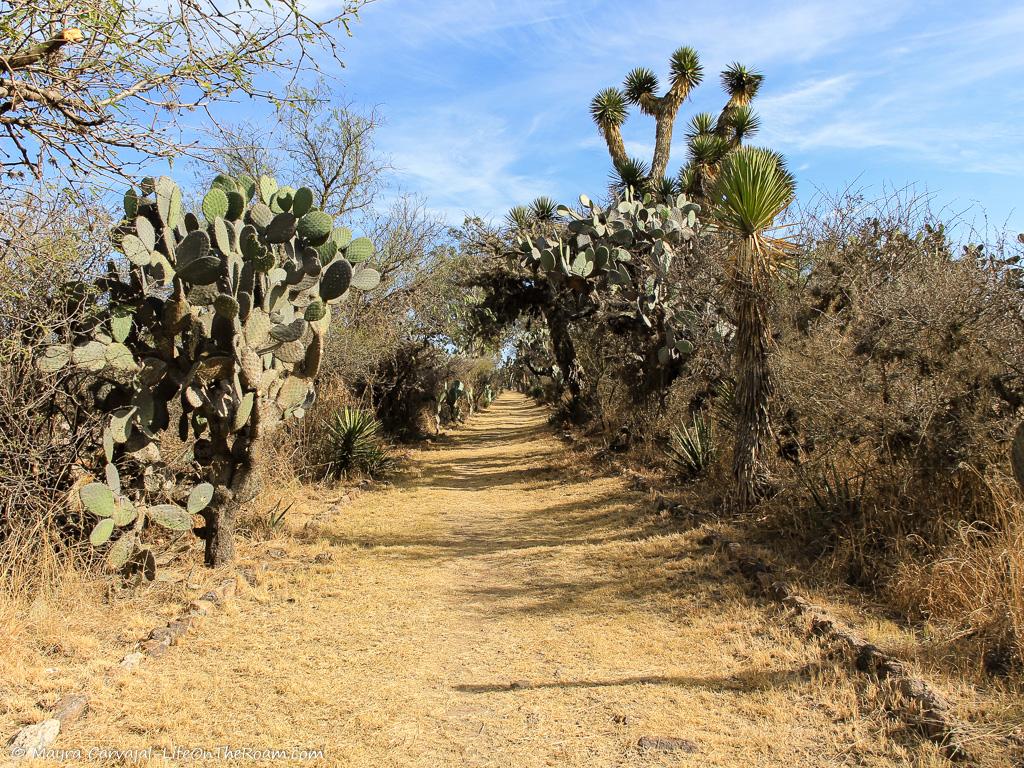
You can hike up the hill and explore the short, rocky hiking trails to learn more about the arid environment and enjoy panoramic views.
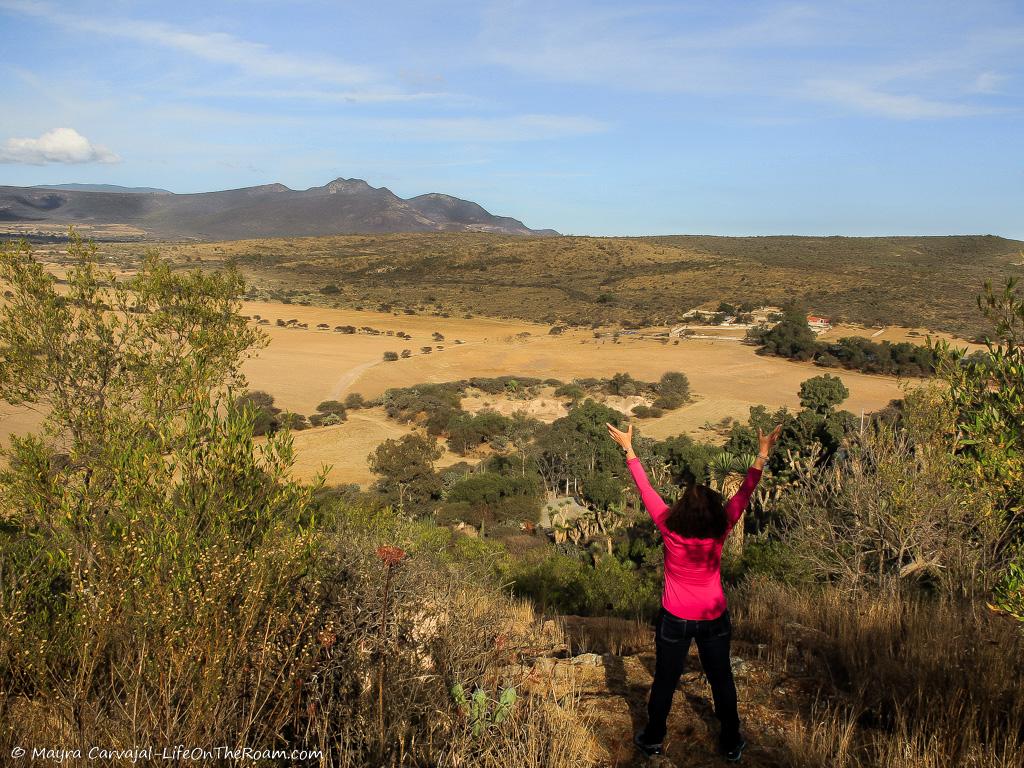
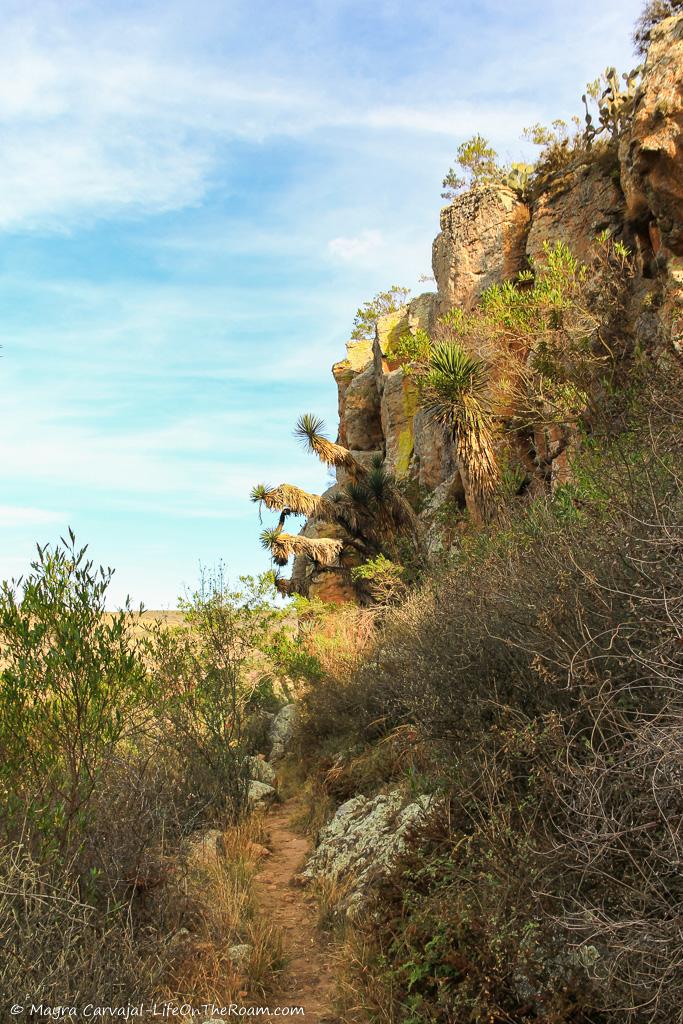
Keep your eyes peeled for different birds including six species of hummingbirds.
In one of the trails, you can see barely-there springs fed by deep underground water sources forming small ponds which are an oasis for wildlife.
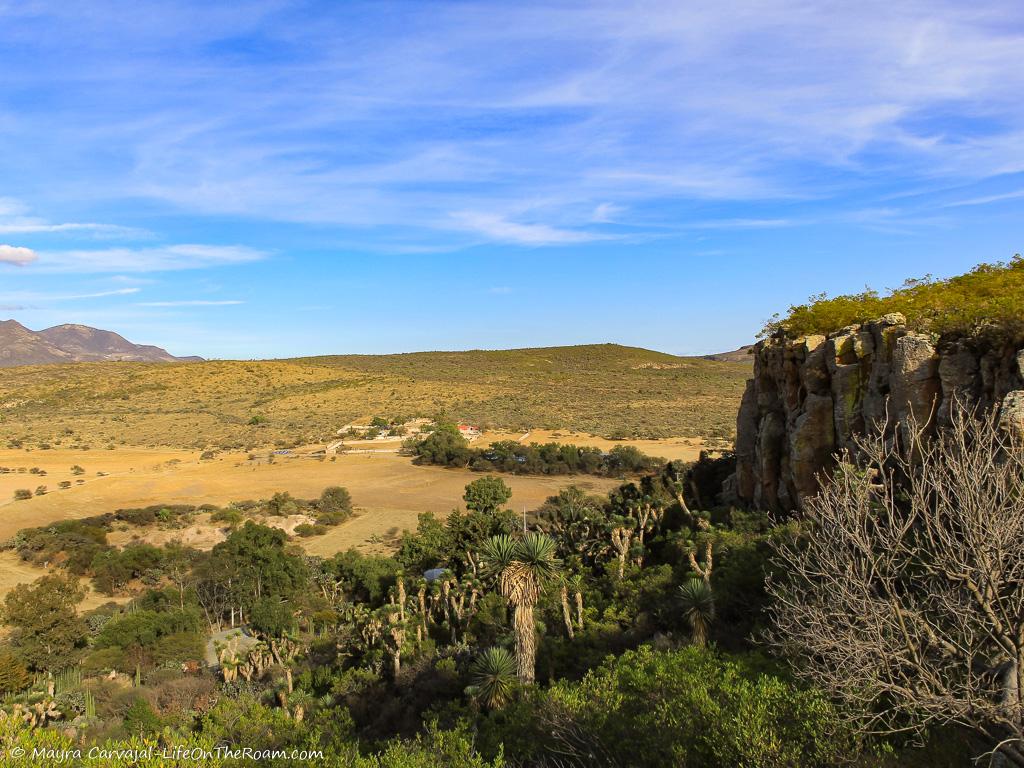
The garden offers informative tours to learn more about the surroundings.
Bring a hat, sunglasses, a refillable water bottle, and sunscreen. It can be hot and there’s little shade.
After you’re done you can walk to the town and relax at the Jardín Principal of this Pueblo Mágico. You can see the Church of Saint Peter and Saint Paul and the Templo de la Santa Escala, both built by the Franciscan Minor Friars.
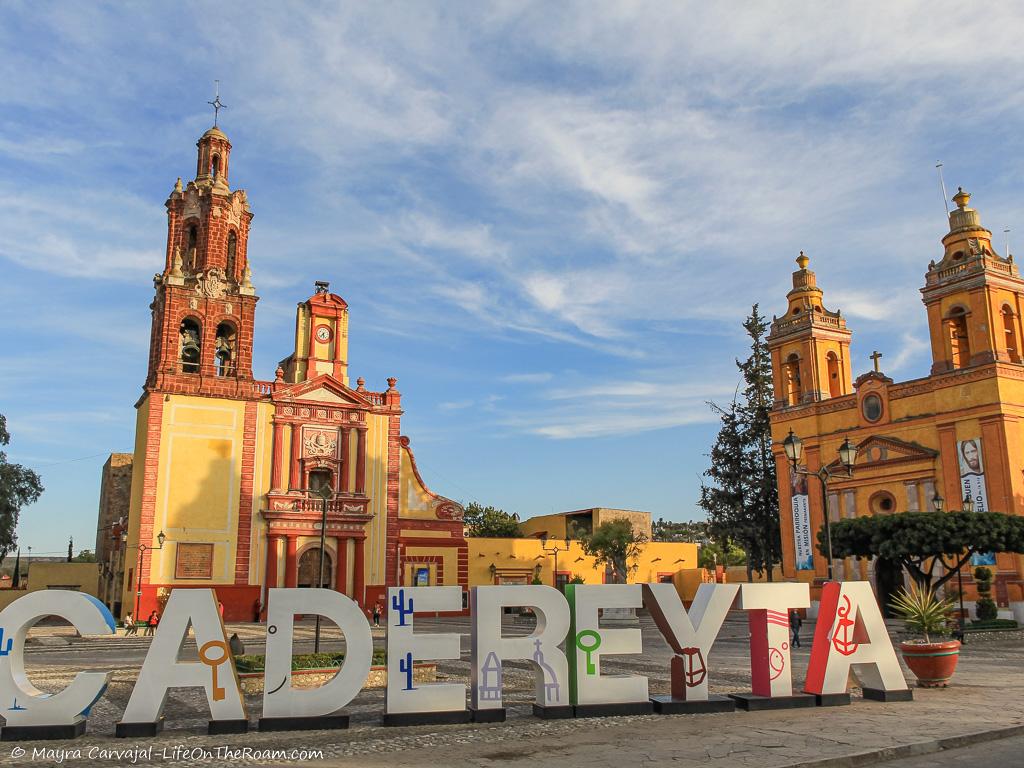
The first one (with one tower) started in 1731. The tower was completed in 1756 and the neoclassical facade in 1802. The second one (with the two towers) dates back to 1874 and opens once a year during Easter.
How to get to Cadereyta de Montes from Querétaro
From Querétaro bus terminal take the Flecha Amarilla bus (around MXN$ 70 p/p), leaving approximately every 40 minutes. The trip takes around 1.5 hours.
We took a short taxi ride from the Cadereyta station to the Botanic Garden and then walked back to the Centro.
Find your Treasure at the Opal Open Mines in Tequisquiapan
Don’t worry, everybody calls it Tequis.
Taking an excursion to the opal mines is a unique thing to do in Querétaro where you’ll enjoy panoramic views from the mountains while you have fun searching for that perfect rock.
These are open mines, you won’t spend your time inside a cave which also means: bring water, a hat, and sunglasses.
Once you arrive at the Tequis terminal take the Autotransportes de Tequisquiapan bus to La Trinidad, a small town at the foot of the mountains, in the outskirts of Tequis. They leave roughly every 30 minutes.
Ask the driver to drop you cerca de las minas (close to the mines) and they will leave you close to the shops that do the excursions.
See where the bus dropped us and the location of the shops that take you to the mines on the map at the beginning of this post.
We hopped on a 4×4 vehicle to join a group that was ready to go with Excursiones a las Minas Hector Montes.
Up we went on a bumpy ride on rocky roads stopping a couple of times to take pictures of the layers of mountains stretching in the horizon.
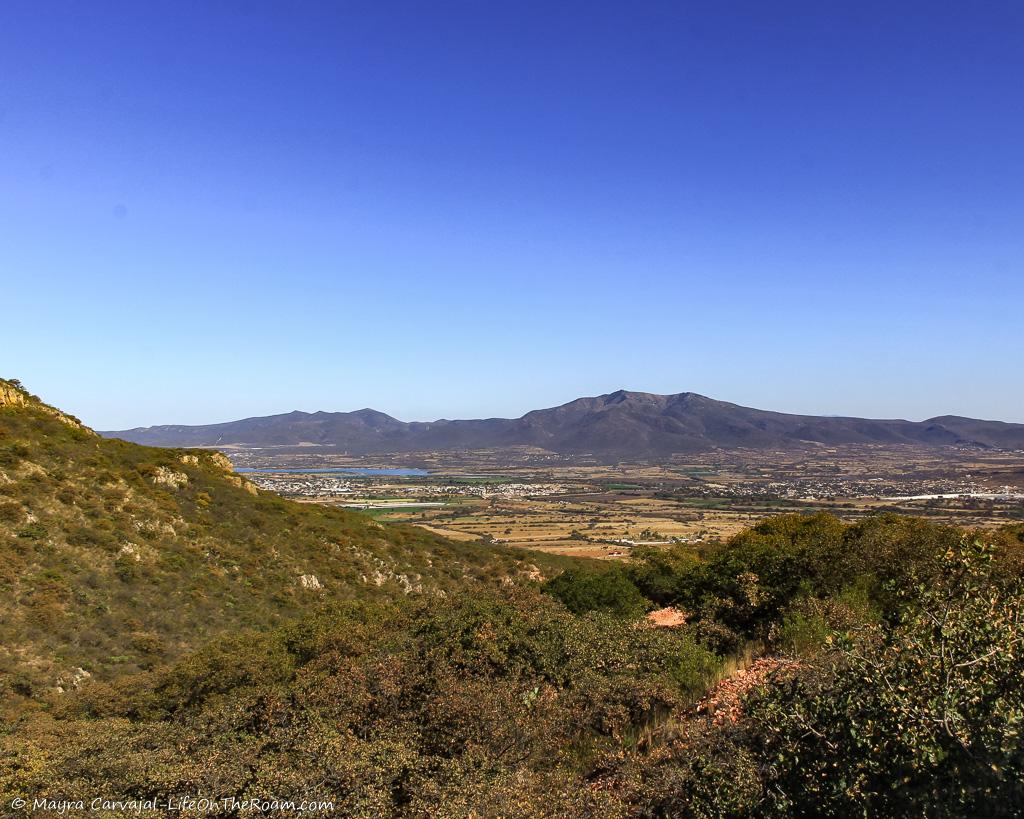
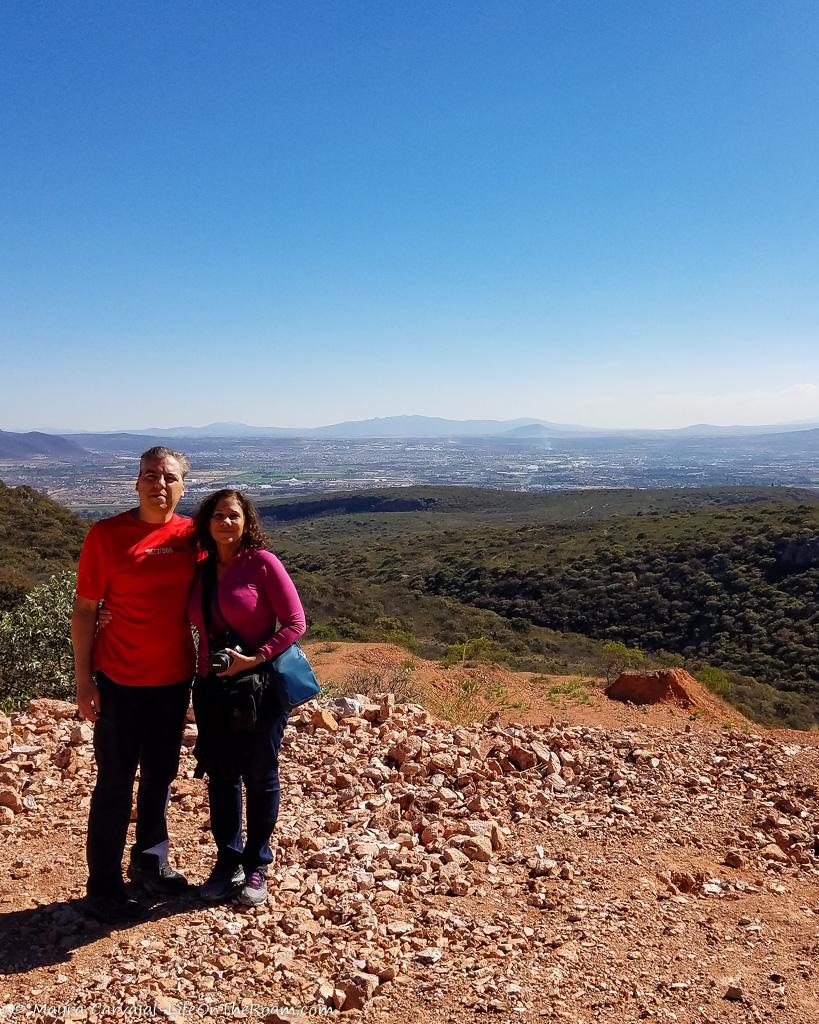
Once we arrived at the mine the guide gave a brief explanation about the extraction process and the characteristics that make a piece of opal valuable: size, colour, transparency, pattern, etc.
Armed with the supplied hammer and surrounded by a sea of clay-coloured rocks and cliffs that made me think I landed on Mars, I started to chip away some big pieces.
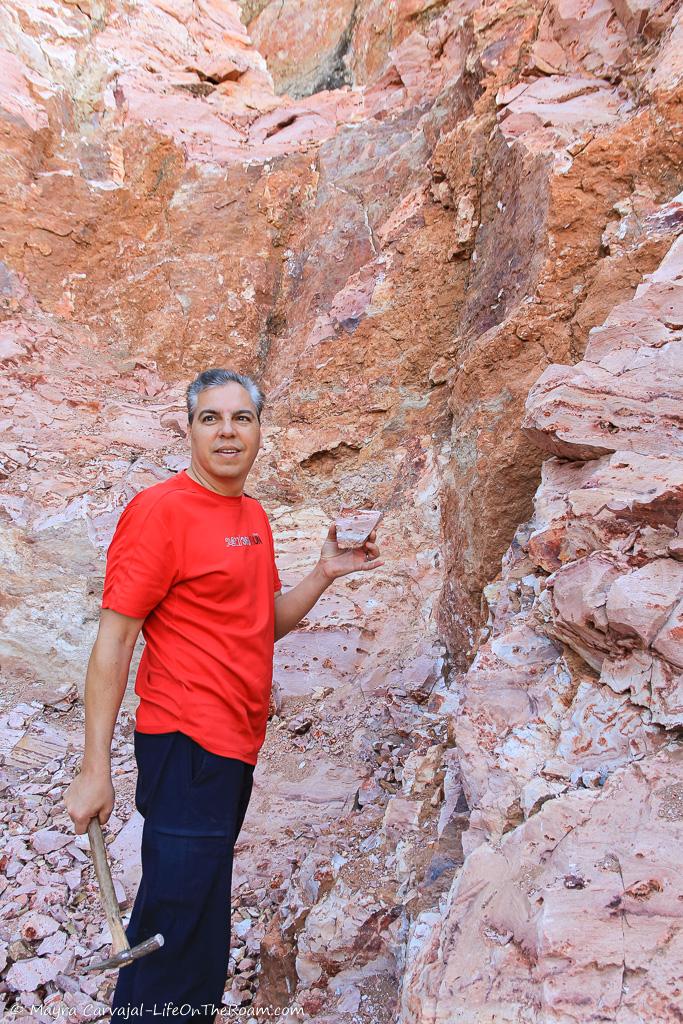
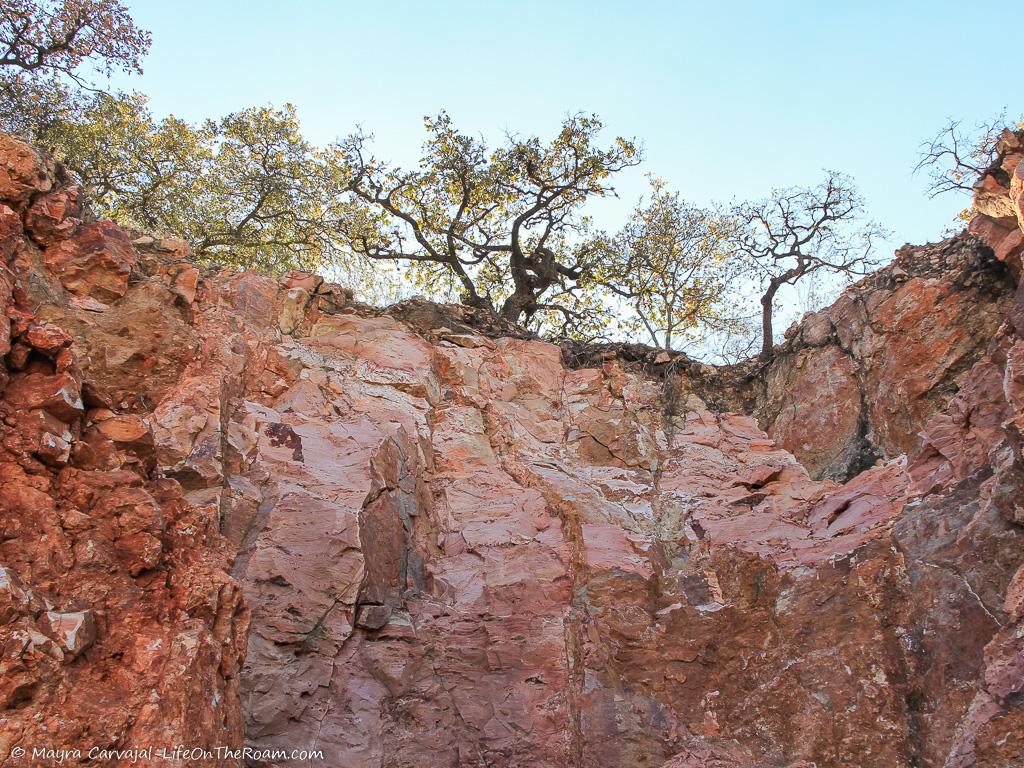
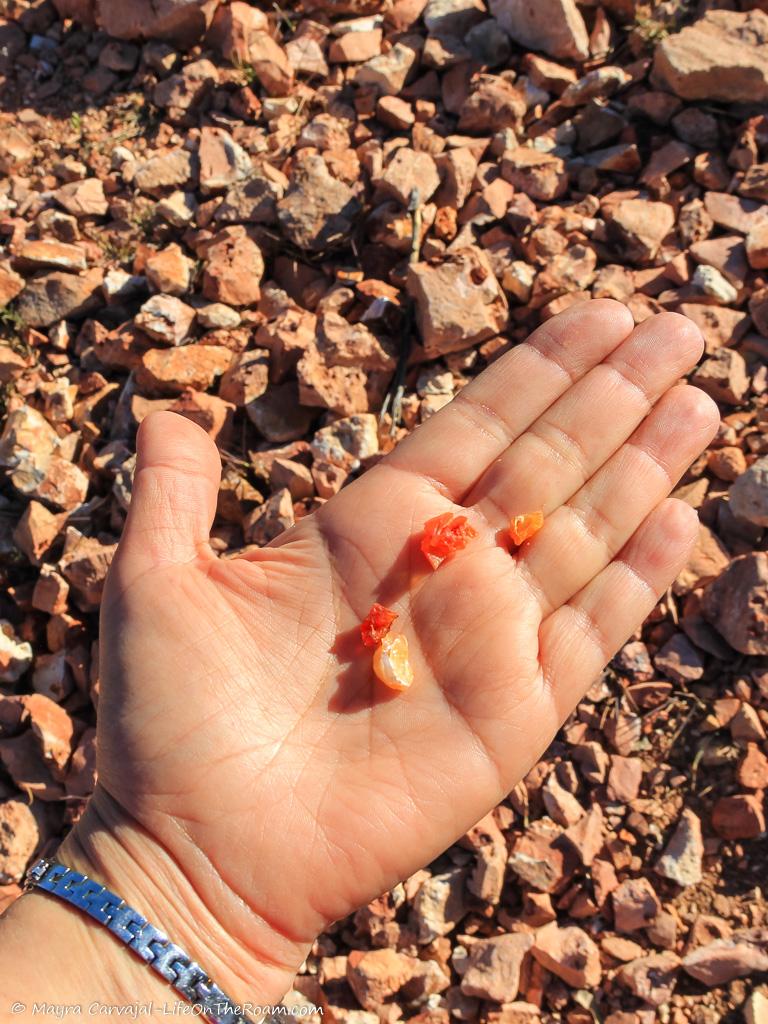
You keep any opal you find. You may even hit the jackpot and find a valuable piece they may want to buy from you.
On the way back we stopped at the shop where we saw how they clean, polish, and shape the opals.
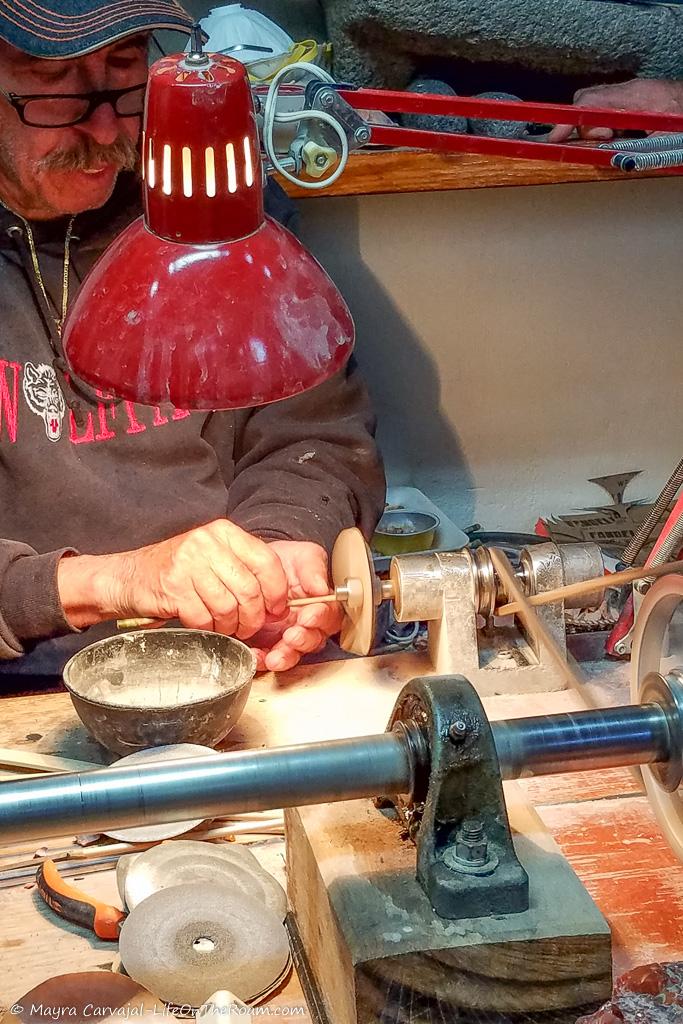
If you found a nice stone you can have it turned into a piece of jewelry or you can buy something from their extensive collection.
Note: there may be a minimum number of people required for them to go. If you’re travelling by yourself or as a couple you may need to wait for more people to show up. And remember to bring comfortable shoes as you’ll be walking on rocks.
Set aside some time to take a walk around the Magic Town of Tequis. Once the bus from La Trinidad drops you back at the terminal turn right to reach the Centro (a 15-minute walk).
Go to Plaza Miguel Hidalgo, the town’s main square, and visit the (pink!) Parish of Santa Maria de la Asunción, a beautiful church with a neoclassical façade built in 1874.
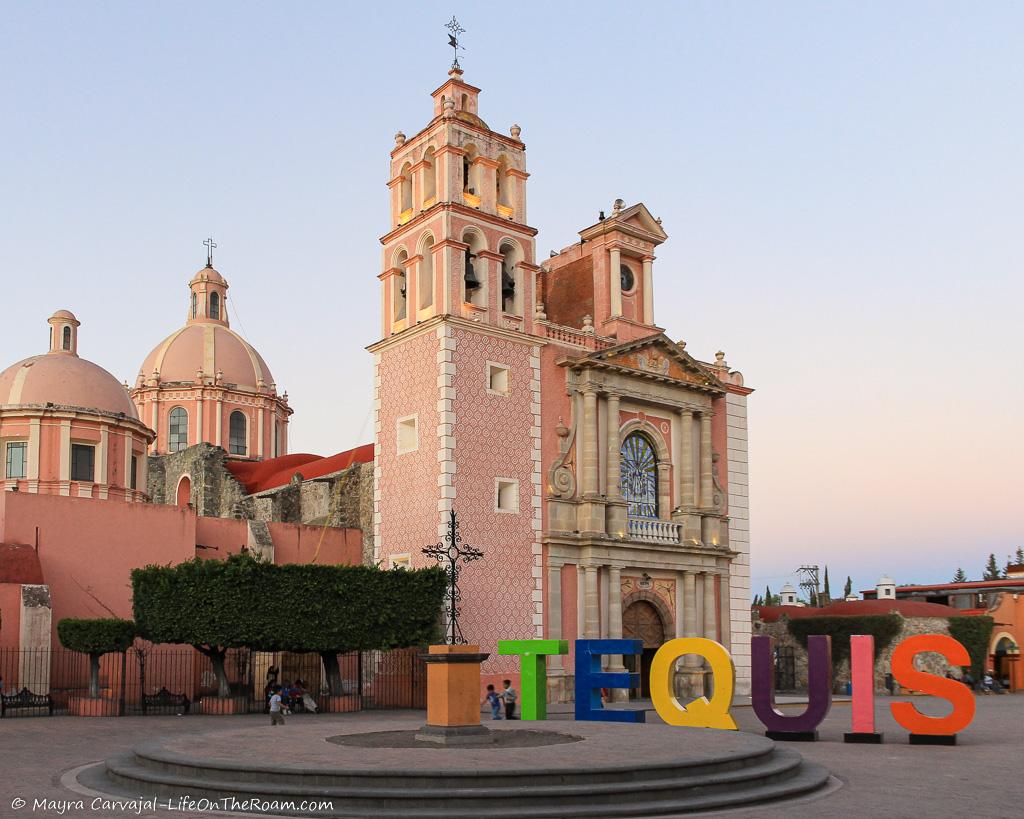
To end the day you can stop at the Freixenet Wine Bar for some local wine and cheese.
How to get to Tequis from Querétaro
From Querétaro bus terminal take the Flecha Azul bus (around MXN$ 60 p/p), leaving approximately every 30 minutes. The trip takes around one hour.
Hike or Climb the Peña de Bernal, World’s Tallest Monolith (and Treat Yourself for Artisanal Ice Cream)
Being the town with the tallest monolith in the world gave San Sebastián Bernal (known as Bernal) its ticket to fame.
The Peña de Bernal is a 433 metres tall, eight million years old natural monument listed as an Intangible Cultural Heritage Site by UNESCO commanding the skyline of this Magic Town. It’s also a sacred site for the Chichimecas, the indigenous population of the region.
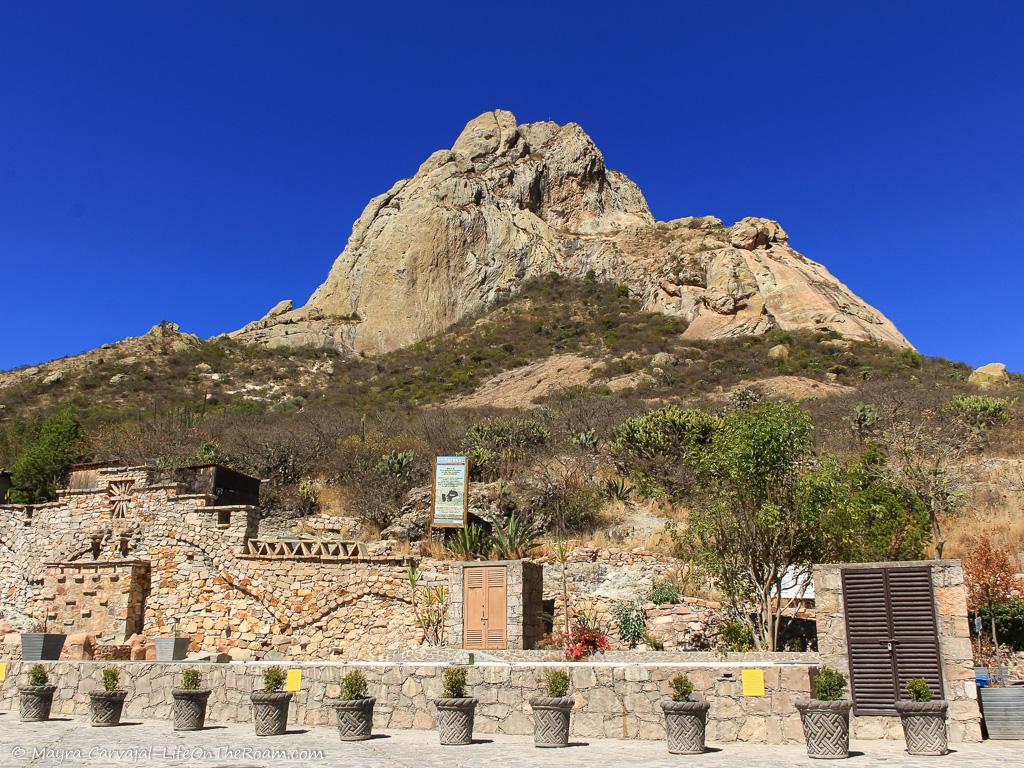
In case you’re wondering what a monolith is, we’re talking about a single massive rock (a peña); in the case of the Peña de Bernal, it’s of volcanic origin.
What’s even cooler is that you can hike your way up around halfway and enjoy the terrific views.
If you want to go beyond the trail you’ll need to do rock climbing, with the proper equipment. You can book a rock climbing activity with local guides.
The hike on the most popular trail is a moderate constant incline in rocky terrain. Bring proper shoes and enough water as there is no shade.
In case you run out of it, you’ll find some vendors up there selling cold bottled water. About halfway I was taking a break to catch my breath when I saw a tiny lady brisk her way up carrying a huge cooler full of ice and big packs of water on her back.” Oh boy, I think I just saw Wonder Woman”.
From the top, you’ll have a panoramic view of the town and beyond. 100% worth the hike.
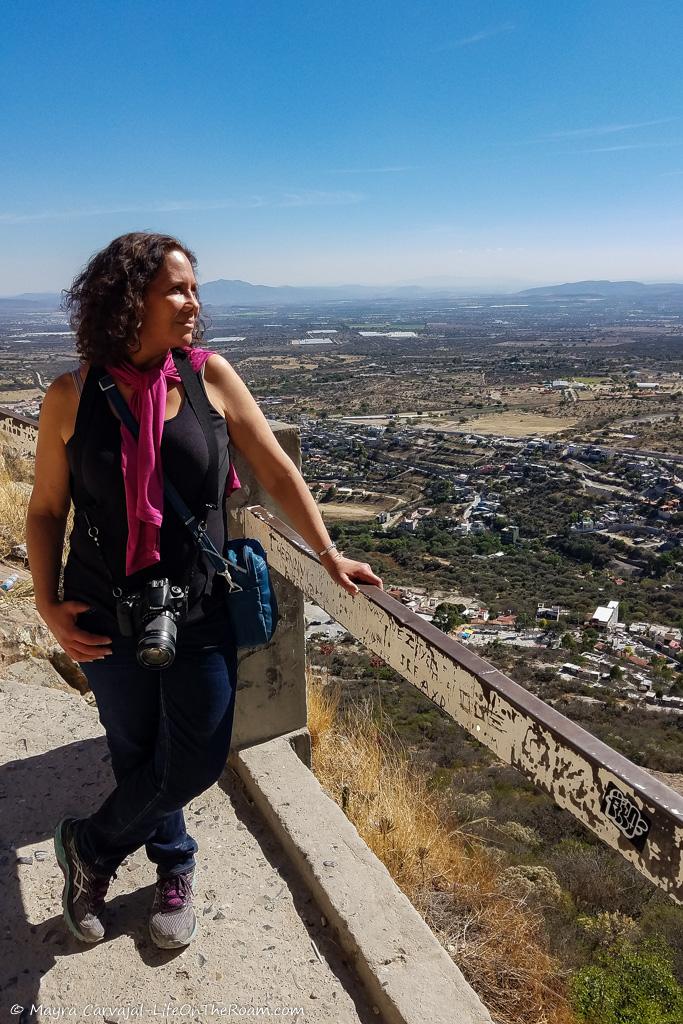
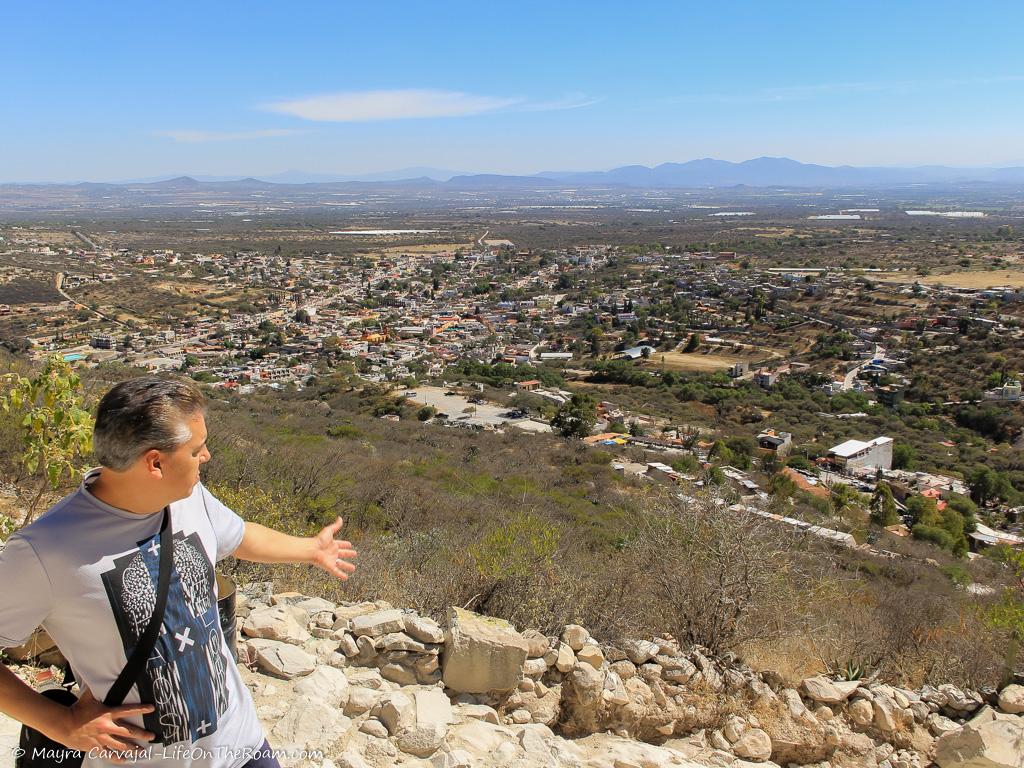
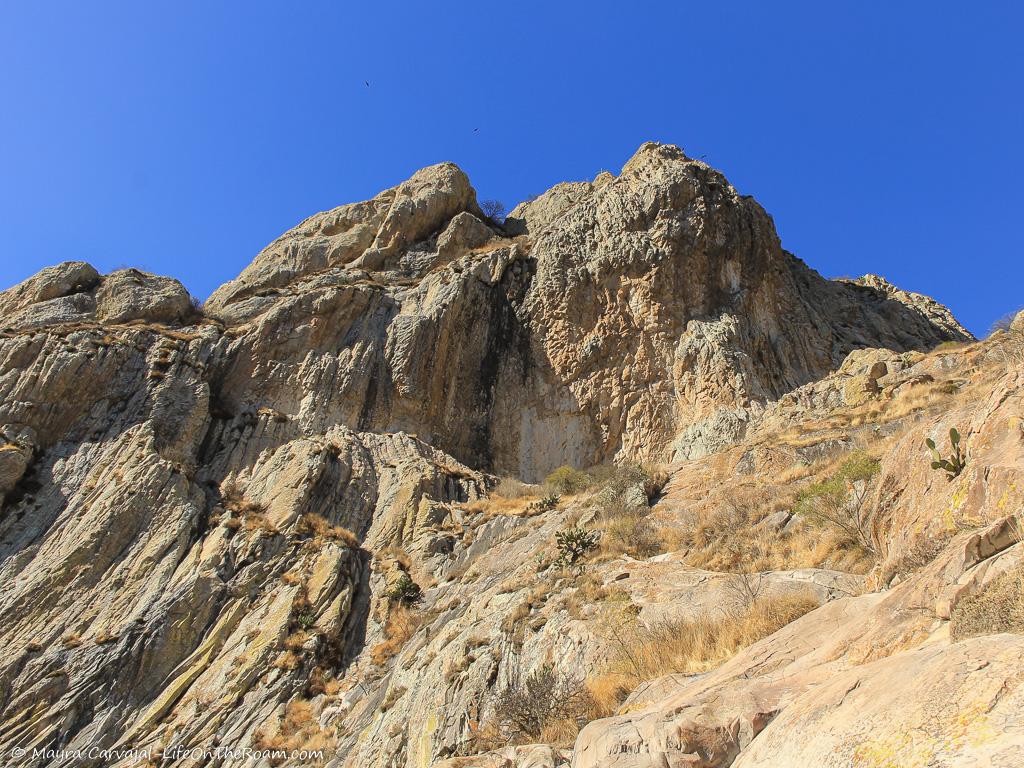
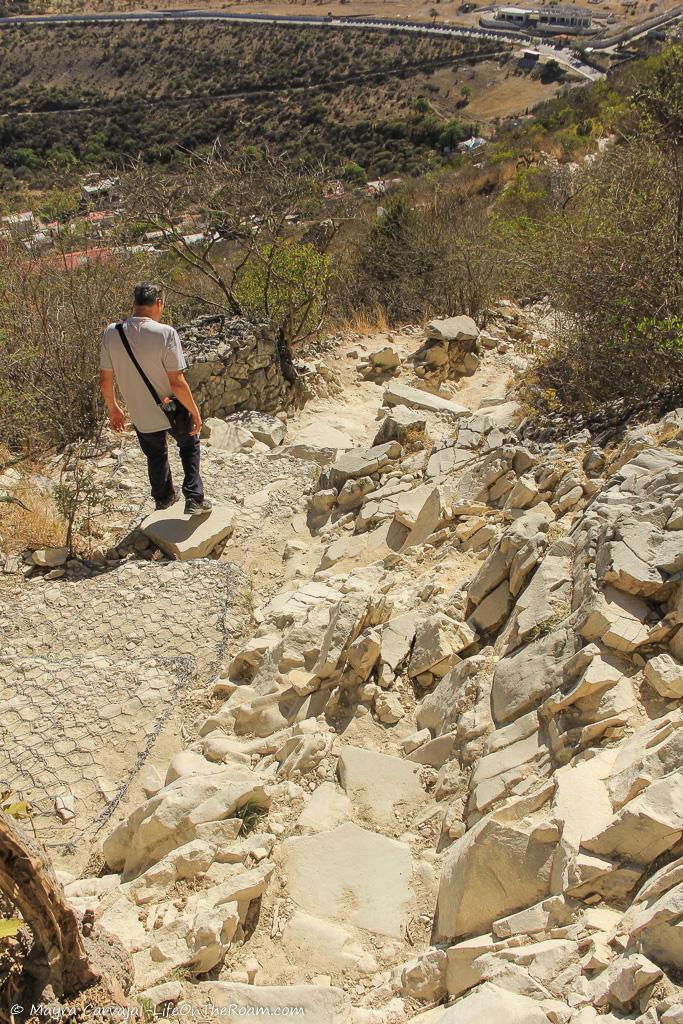
You’ll also see the rock climbers way above, like miniature figures working hard to reach the top.
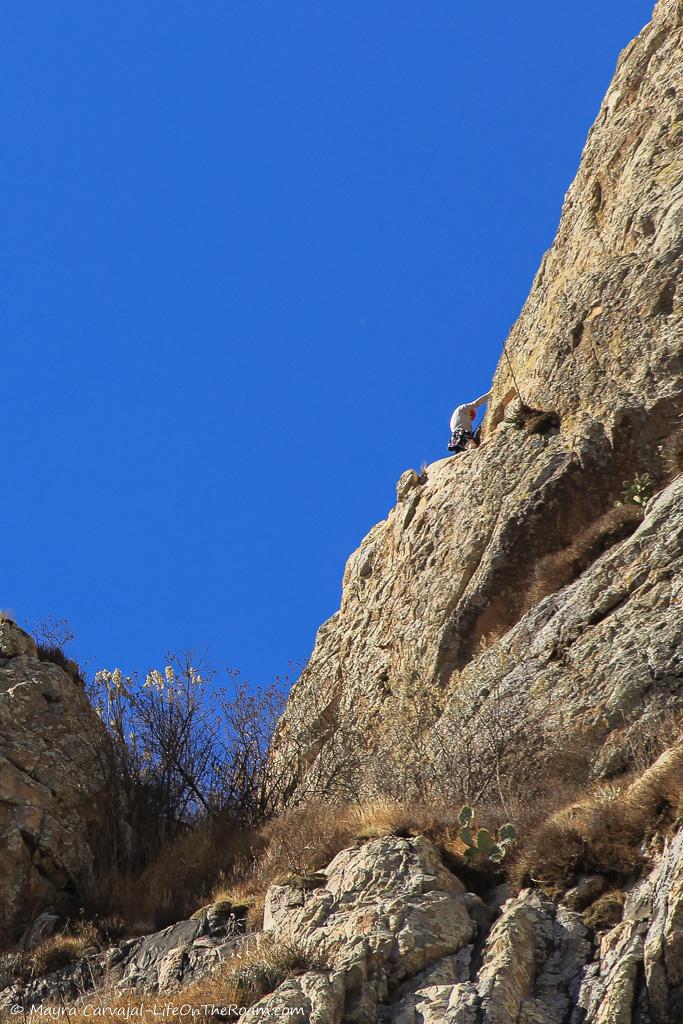
To get to the trailhead we walked from the Bernal bus stop to the town where we took a tuk-tuk to the start of the trail. See the location of the stops on the map I included at the beginning of this post.
After the hike, we walked downhill to the centro checking out the colourful textiles typical of Bernal, and rewarded ourselves with some delicious artisanal ice cream. You’ll find many shops and many flavours, including scrumptious cheese and nopal (a cactus), and cheese and xonocostle (another cactus).
Yes, cactus ice cream is amazing. Give it a try and let me know if you agree.
If you prefer to go for something more familiar you can also find wine ice cream, as well as a large selection of local wine and cheese.
Before heading back, take some time to relax at the main square and visit the beautiful church of San Sebastián, completed in 1725. I loved the small cross on the atrium.
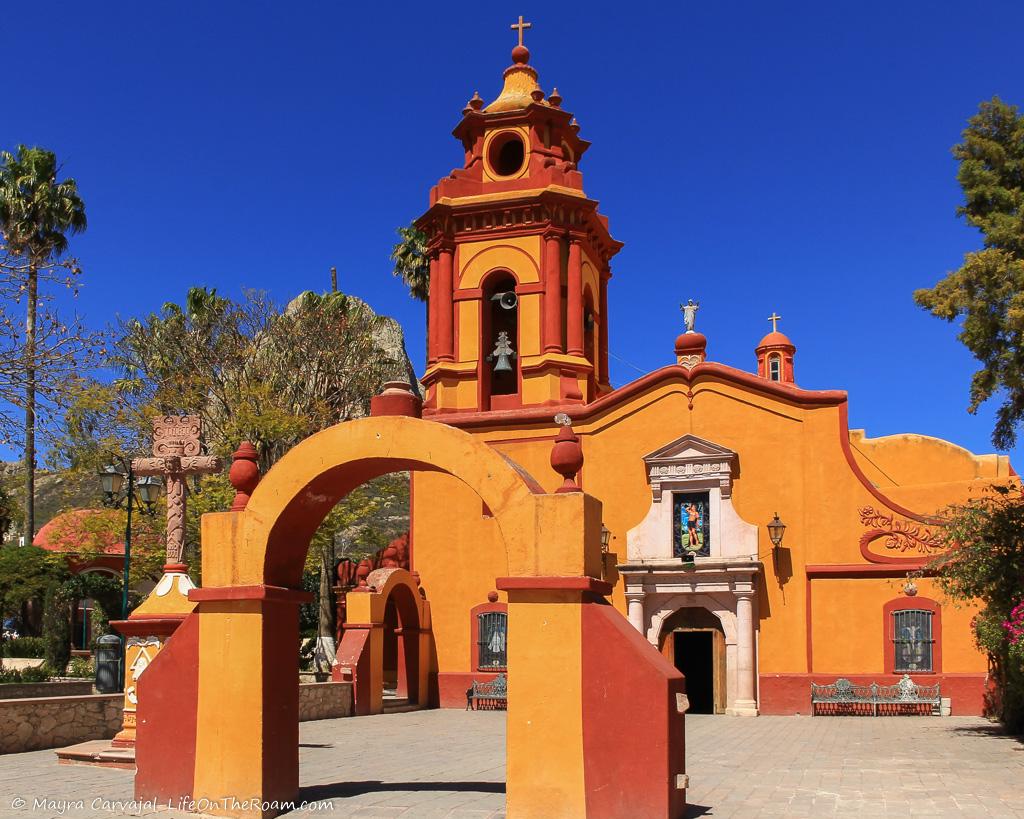
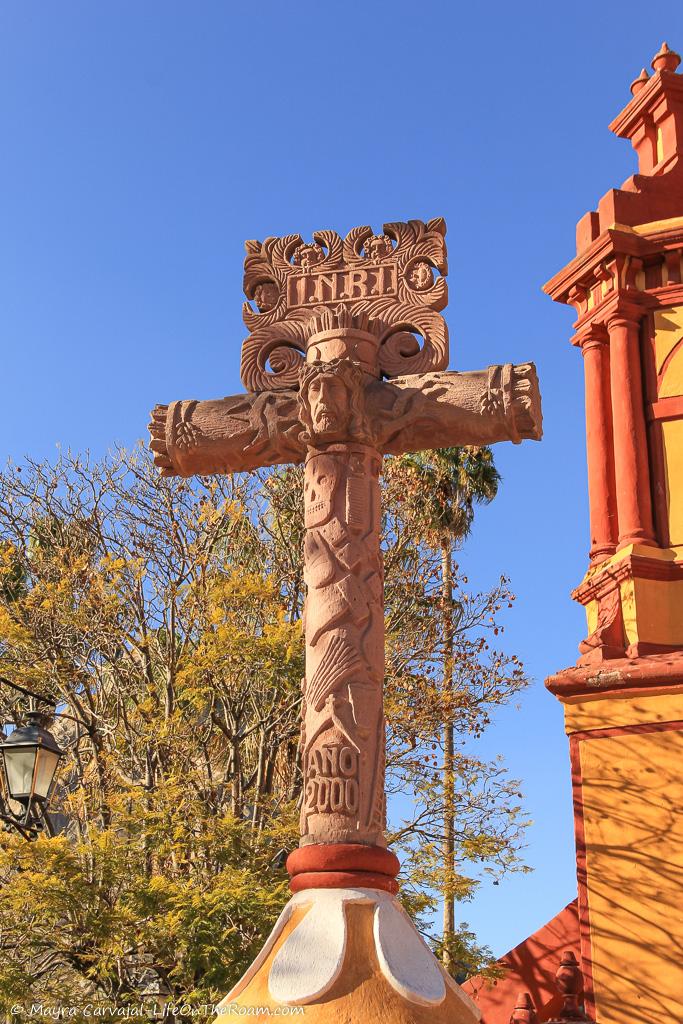
How to get to Bernal from Querétaro
From Queretaro’s bus terminal (next to the stadium) take the Flecha Amarilla bus to Bernal (around MXN$ 64), leaving approximately every 1.5-2 hours, depending on the time of the day. The trip takes around one hour.
Note: Bernal is not the final destination of the bus so pay attention when it makes it to the stop. I didn’t and I only realized we missed it when I saw we were moving away from the Peña.
If you have time for another day trip you can explore the hilly town of San Miguel de Allende in the bordering state of Guanajuato, a 1.5-hour bus ride away.
How to Get to Querétaro
By Air
You can fly to the Querétaro International Airport (QRO) directly from the United States (Chicago, Dallas, and Houston), and from major cities within Mexico.
A taxi or Uber ride from the airport to the centro takes around 30-40 minutes.
By Bus
You can get to Santiago de Querétaro by bus from major cities and towns around Central Mexico. Primera Plus and ETN are comfortable and safe options to travel around.
From Mexico City (Terminal Norte or Airport): around 3 hours.
From Guanajuato: 2.5 hours
From San Miguel de Allende: 1.5 hours
From San Luis Potosí: around 3 hours
From Guadalajara: around 5 hours
For schedules and costs check primeraplus.com.mx and etn.com.mx.
Whether you’re looking for exciting outdoor adventures, panoramic views of the semi-desert landscapes, or historic sites with colonial architecture, fountains, and monuments, Querétaro and its surroundings will embrace you with their magic.
What day trip from Querétaro would you choose?
YOU MAY ALSO WANT TO READ
BOOKING FLIGHTS AND ACCOMMODATIONS
Book your flight without losing your shirt
We check Momondo to find great deals to book our flights. Also, check Great Escape: it combines the listings from Expedia, Kiwi, Kayak, (and Skyscanner on the premium service) to find the best airfares.
To find a place to stay for less
Booking.com: this site combines everything under the sun. You’ll find hotels, apartments, B&B, hostels, rooms, etc., with all sort of filters to make your search a breeze.
Hotwire: the first site I check when we plan to stay at a hotel for a few nights. You can save anything from 20% to 60%. Use the search filter to find what you want and you’ll end up with three listings that match your criteria. You’ll know which one you’ll get after you book. If you can handle a little bit of uncertainty you can score big savings.
House Sitting: you take care of people’s pets and house for free while staying for free. It’s the closest thing to experiencing a place “like a local”. But it comes with responsibilities… Are you an animal lover? It may become your new way to travel.
To get travel insurance
SafetyWing: travel medical insurance that gives us peace of mind knowing that we’re covered in case of emergency. It’s convenient, affordable, and suitable for digital nomads who spend a long time outside their home country.
Check the full list of travel resources on my Resource Page for more options and savings
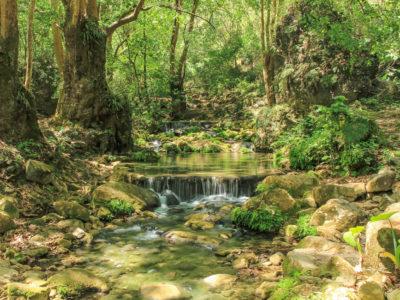
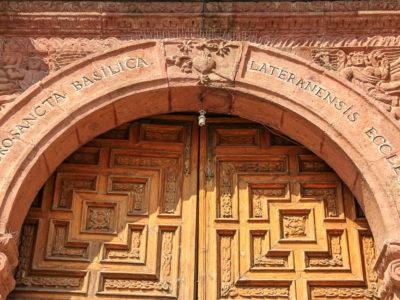
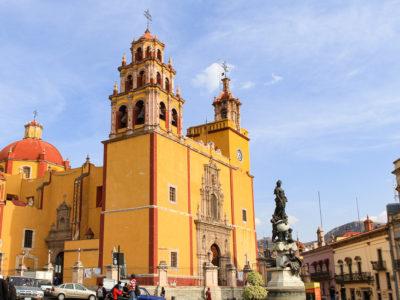
You really make people want to go to Querétaro. Beautiful pictures, so folkloric. Thanks!
If you like artsy cities from the colonial era this is your place!
The incredible beauty of this place is enhanced by its rich history and culture that still permeates the region. The pictures and what you’ve written about the place make me want to visit to explore, that’s for sure.
Thanks! You won’t regret going there.:-)
What a gorgeous city, I love how everything is so grand. Will definitely want to visit!
You’ve got that right. Grand is an accurate description.